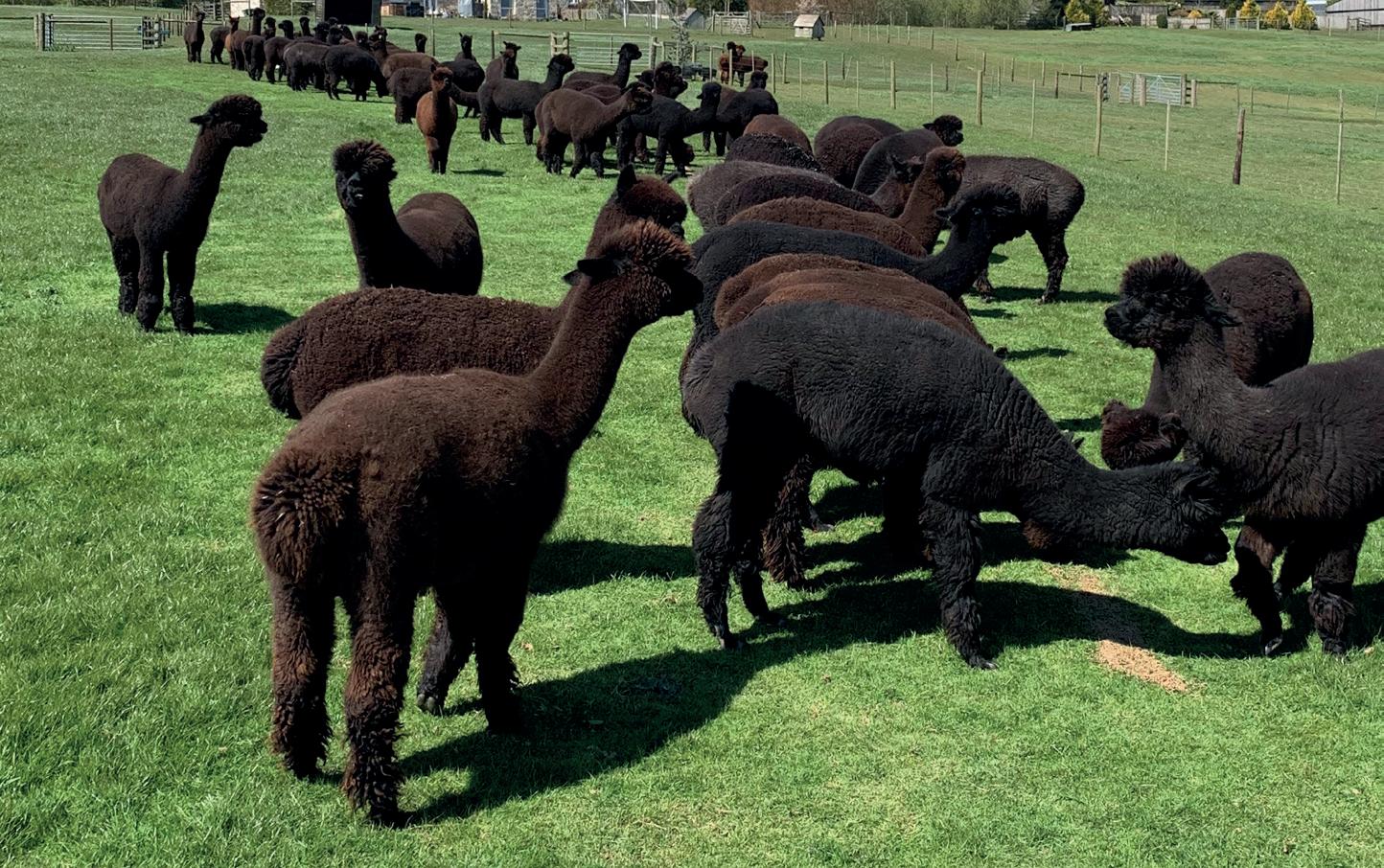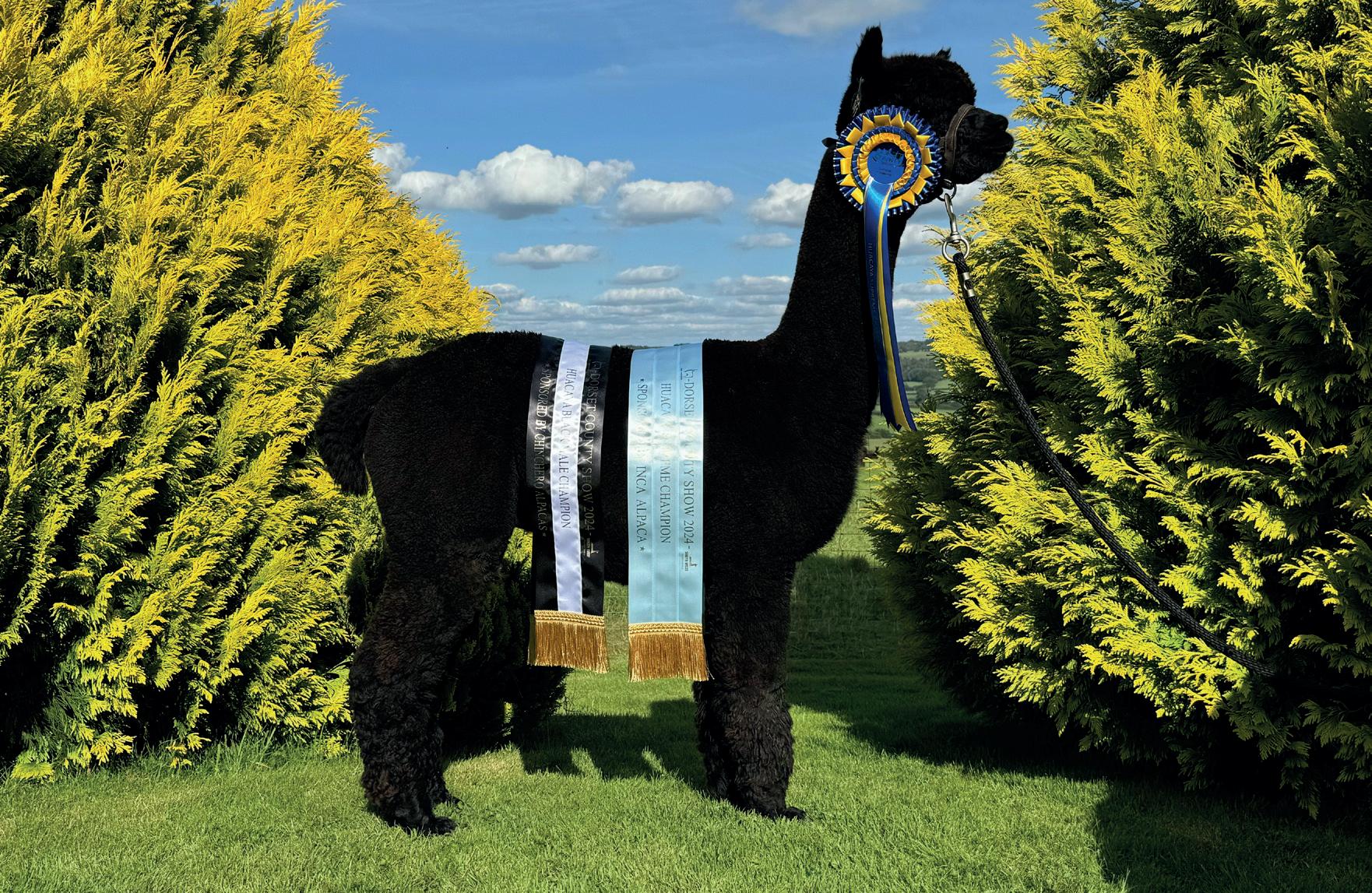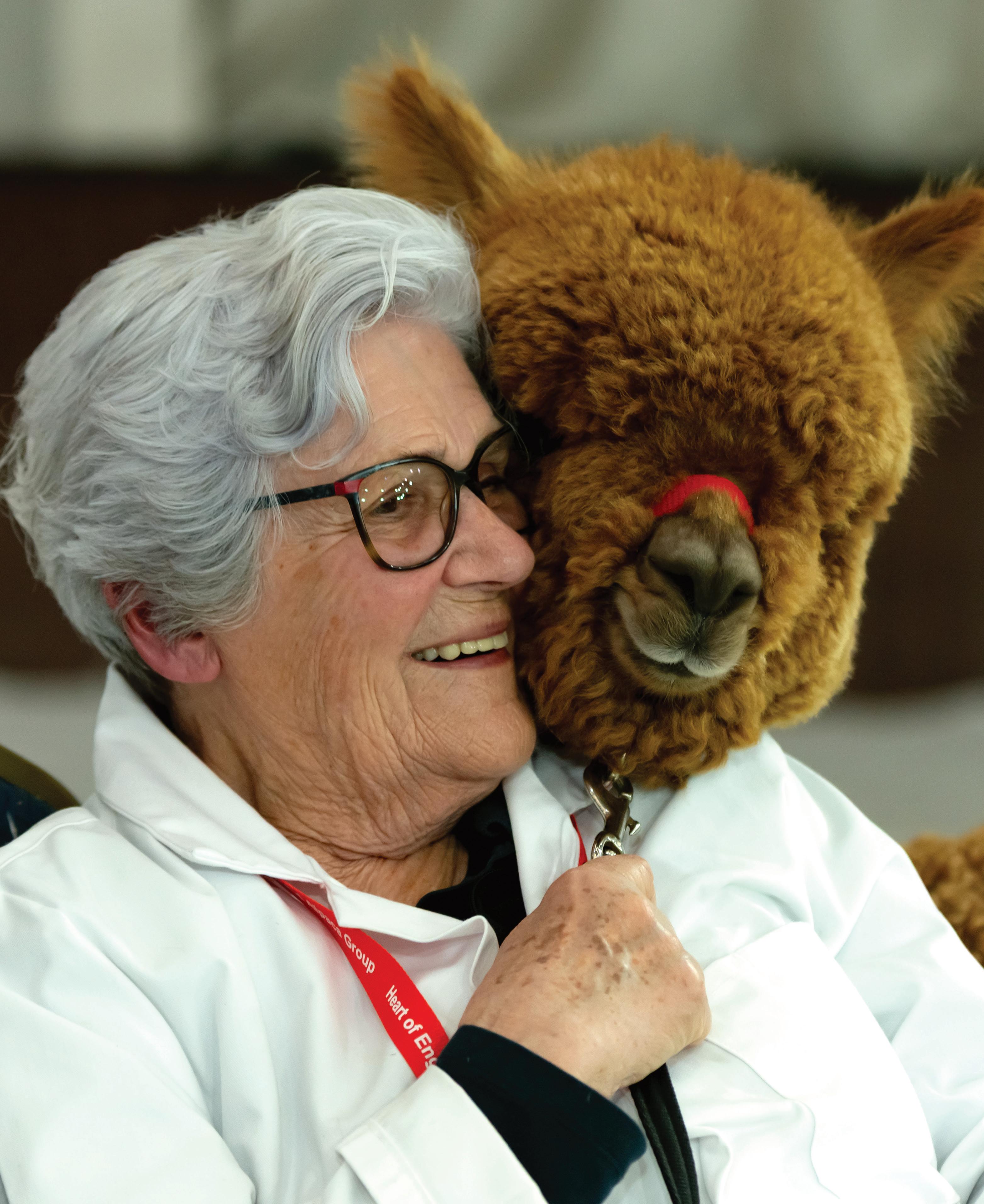



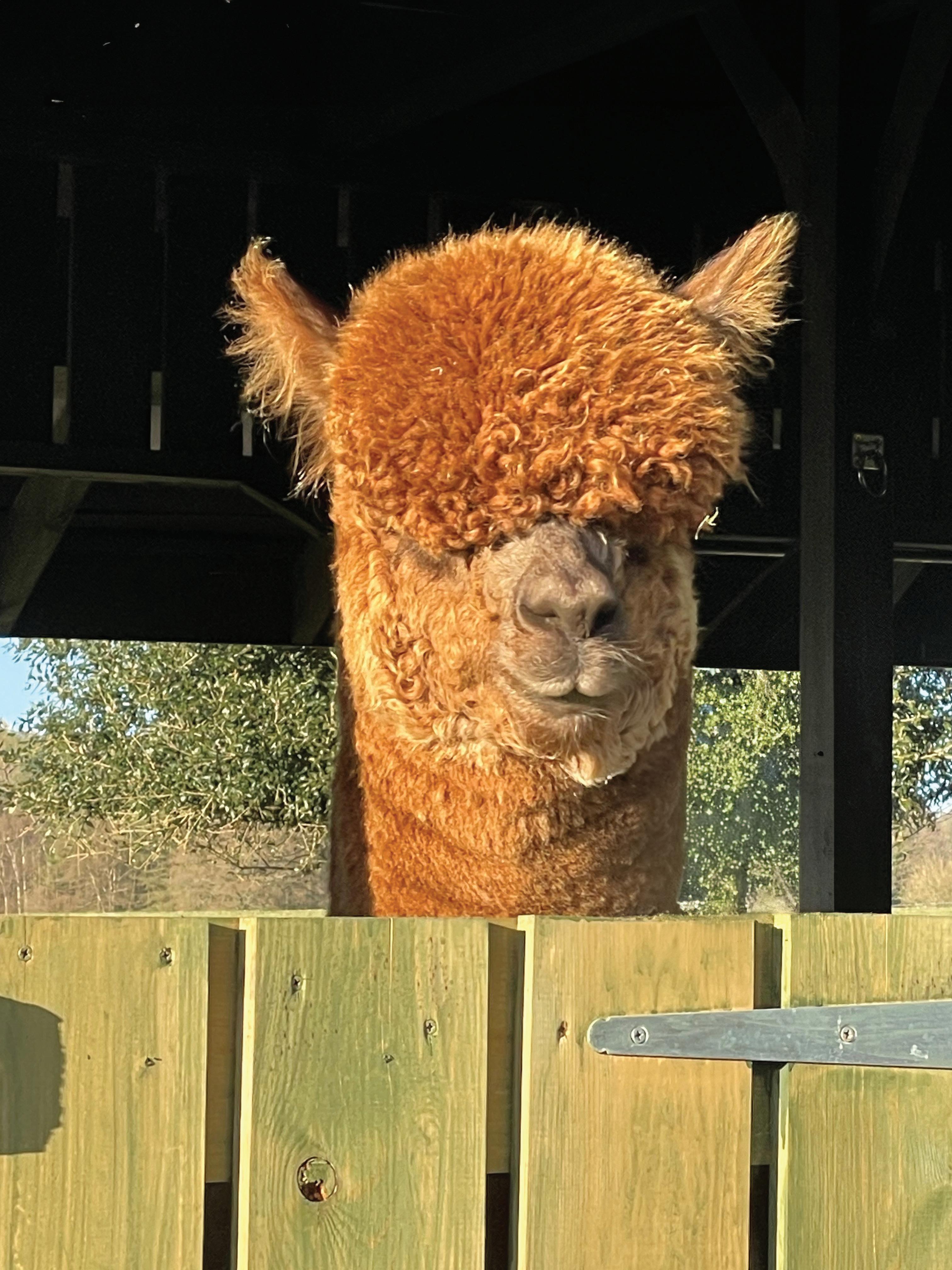
www.bas-uk.com
THE BRITISH ALPACA SOCIETY






www.bas-uk.com
THE BRITISH ALPACA SOCIETY
c/o Grassroots Systems Ltd,
PO Box 251, Exeter EX2 8WX.
Tel (within UK): 0845 3312468
Tel (Overseas): +44(0)1392 437788
Fax: +44(0)1392 437788
Email: info@bas-uk.com
BAS CHIEF EXECUTIVE
Dr Duncan Pullar
Tel: 07496 578781
Email: ceo@bas-uk.com
EDITORIAL
Editor: Liz Wright alpaca.ed@kelsey.co.uk
ADVERTISEMENT SALES
Wendy King
Talk Media Sales
Tel: 01732 448748
Email: wendy@talk-media.uk
GRAPHIC DESIGN
Jo Legg 07306 482166 jo.legg@flair-design.co.uk
KELSEY MEDIA
The Granary, Downs Court Yalding Hill, Yalding, Maidstone, Kent, ME18 6AL 01959 541444
MANAGEMENT
Chief Executive Officer: Steve Kendall
Divisional Managing Director: Fiona Mercer
Retail Director: Steve Brown
Renewals and Projects Manager: Andy Cotton
Senior Subscription Marketing Manager: Claire Aspinall
Subscription Marketing Director: Kevin McCormick
Print Production Manager: Georgina Harris
Print Production Controller: Kelly Orriss
DISTRIBUTION
Distribution in Great Britain: Seymour Distribution Limited 2 East Poultry Avenue, London EC1A 9PT Tel: 020 7429 4000 www.seymour.co.uk
Distribution in Northern Ireland and the Republic of Ireland: Newspread Tel: +353 23 886 3850
Kelsey Media 2025 © all rights reserved. Kelsey Media is a trading name of Kelsey Publishing Ltd. Reproduction in whole or in part is forbidden except with permission in writing from the publishers. Note to contributors: articles submitted for consideration by the editor must be the original work of the author and not previously published. Where photographs are included, which are not the property of the contributor, permission to reproduce them must have been obtained from the owner of the copyright. The editor cannot guarantee a personal response to all letters and emails received. The views expressed in the magazine are not necessarily those of the Editor or the Publisher. Kelsey Publishing Ltd accepts no liability for products and services offered by third parties.
For more information of our privacy policy, please visit Kelsey Media takes your personal data very seriously. For more information of our privacy policy, please visit https://www.kelsey.co.uk/privacy-policy/ . If at any point you have any queries regarding Kelsey’s data policy you can email our Data Protection Officer at dpo@kelsey.co.uk.
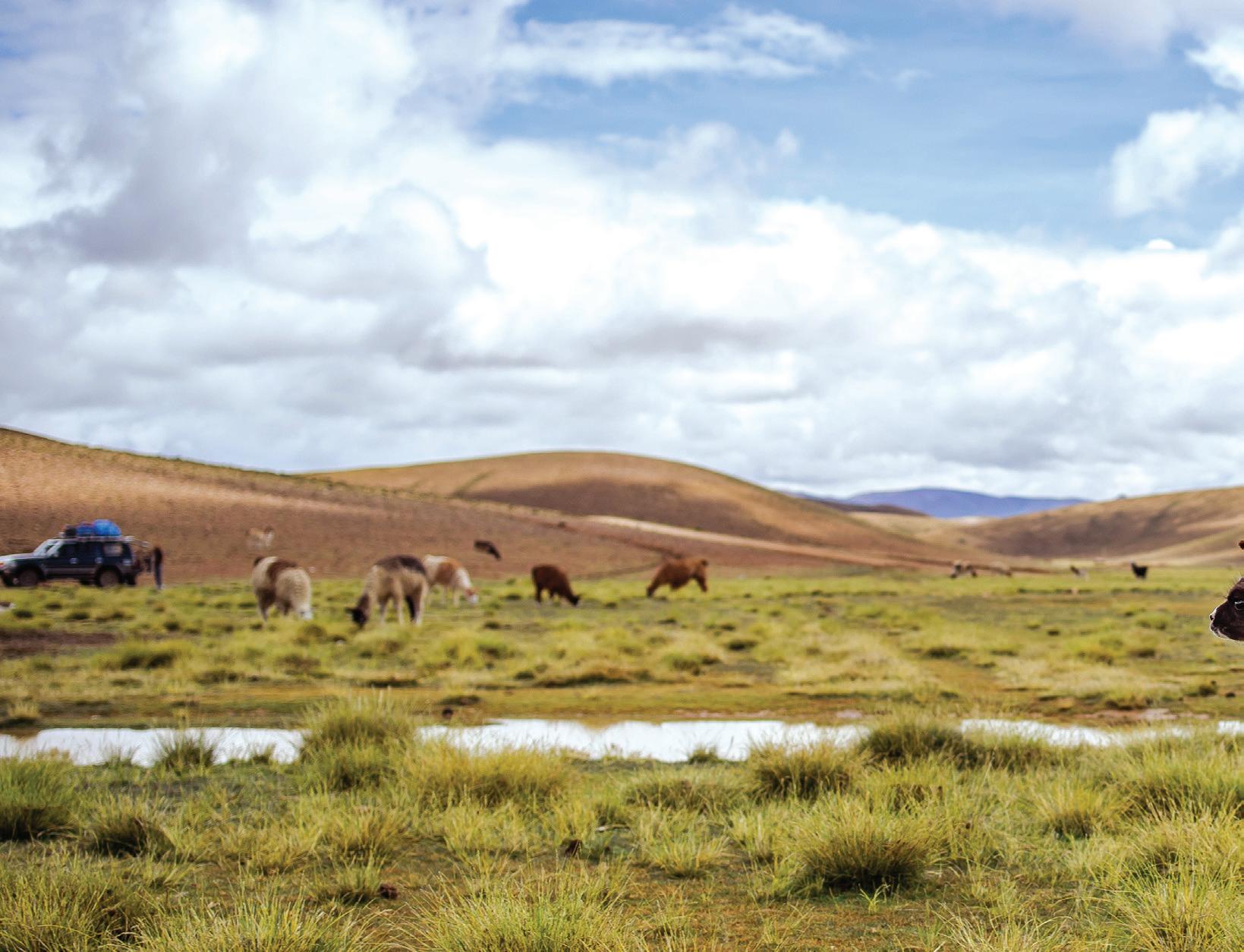
6 BAS Members Conference
Celebrating alpaca ownership to be held at the beginning of October.
8 A strong and united presence
A six-day road trip to Germany for the World Alpaca Conference.

11 A quick guide to alpacas in Poland
12 Estimated breeding values Make faster improvement in your breeding programme.
16 Alpacas take over
Nigel and Margaret Retallack started Carpalla Alpacas in 2010 after deciding they could be the ideal livestock venture for their new 20 acre farm near St Austell in Cornwall.
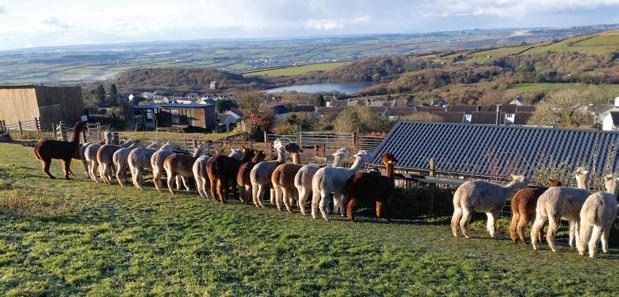
20 Handling made easier
Simply Alpaca is a small family business determined to breed and raise alpacas and llamas using only kind and respectful methods. Here they look at how to gain trust and consent from your animals.

24 Seasonal tips from the vet
An alpaca summer survival guide.
26 Greater powers to clamp down on dog attacks
27 Walk with a difference
Deborah Maxwell, Nith Valley Alpacas, Dumfries & Galloway attended a therapy webinar and gives us her thoughts.
30 Show results NWAG, HoEAG Fiesta and Northumberland.

38 What grade am I in?
A revolutionary way of assessing the value of all alpaca fibre –Innovative Fleece Assessment.
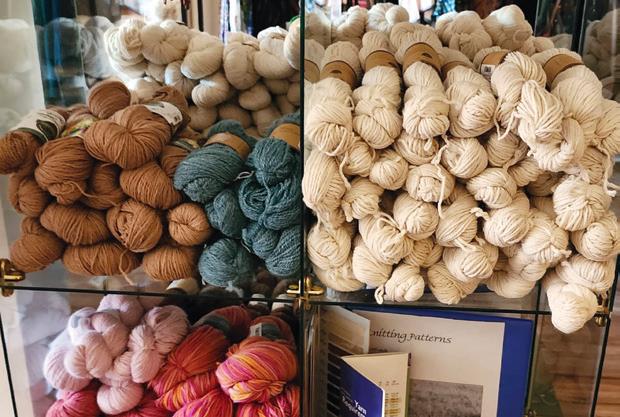
42 Let’s talk about the fleeces in your shed

46 No way, it’s Jose!
In April, world renowned Peruvian alpaca judge Jose Berdejo made a visit to the UK for the very first time.

50 Tips for choosing the right insurance
www.kelsey.co.uk
Cover photo:
Liz Windsor, Artwork Alpacas, at the HoEAG


Liz at Gorefield Alpacas
Although we have become used to hotter summers, this very dry spell with high temperatures has come as something of a surprise. England had its warmest June on record, while the UK experienced its second warmest since the series began in 1884, according to provisional Met Office statistics.
This followed a record-breaking spring which was officially the warmest and sunniest spring on record for the UK. July saw heatwave conditions across much of the UK according to the Met Office. As well as the disappearing grass, meaning additional feeding was needed, managing alpaca in the heat has also been in the news with pictures of alpacas in paddling pools and resting inside barns being seen in the media. No doubt this created considerable interest in alpacas amongst those viewing them but its been a worry for many owners who have risen to the challenge of caring for alpacas in unusual weather conditions.
This issue has a bit of an international feel about it with a new look at fleece evaluation, news and pictures from world renowned Peruvian alpaca judge Jose Berdejo, plus a visit to the World Congress made this year in Germany and a look at the Polish Alpaca Breeder’s Association. A shared love and interest in alpacas and fine fibre is a uniting factor between countries and opens up a new world to breeders and keepers everywhere.
At home we bring you show reports and a guide to summer survival from Dr Ami Sawran MRCVS. There is also some better news from the Government on a new bill to tackle dog attacks. A practical guide to making more of your fibre plus inspirational ideas should get your fleeces out of the barn and into new and exciting projects.
We love to hear from you, so please continue to send us your news, views, show reports and experiences with your alpacas.
Photo: Karen Harvey
TCopy date for our Autumn issue is 8 September and I am happy to discuss your ideas or you can email me your story and photos. It would be good to have some Christmas gift ideas so we can show case your goods and day’s out.
he hot dry weather in England has certainly impacted on hay yields. If you have made enough for your own needs – well done. If you haven’t made enough, or you always buy-in, then don’t leave it late to secure your supplies for the coming winter. Scotland, Wales and Northern Ireland are in a generally better position when it comes to forage supplies.
It is also important to take stock of the condition of the grass in your paddocks this autumn, wherever you are in the country. With many farms having a very wet winter followed by a very dry summer there could well be a need for filling in bare patches or a complete re-seed. Both of these issues have been covered in previous magazines so have a look at the back catalogue to see what you can do.
The member conference, which will include the AGM, is on the weekend of the 4-5 October 2025 in Stoke-on-Trent. Bookings are open for BAS members, through the Registry. The programme is posted in the events section of the BAS Website. There are some places left but capacity is limited to 150 so do not delay if you want to be sure of your place. Alongside the conference and AGM there will also be an industry meeting on the Friday afternoon. This meeting will be in the form of a facilitated discussion with breakout groups considering specific questions. This meeting is a fantastic opportunity to help shape the future of alpacas in the UK and the BAS input into it. You can sign up for the meeting by contacting me. You can come to the industry meeting without going to the conference but why not do both.

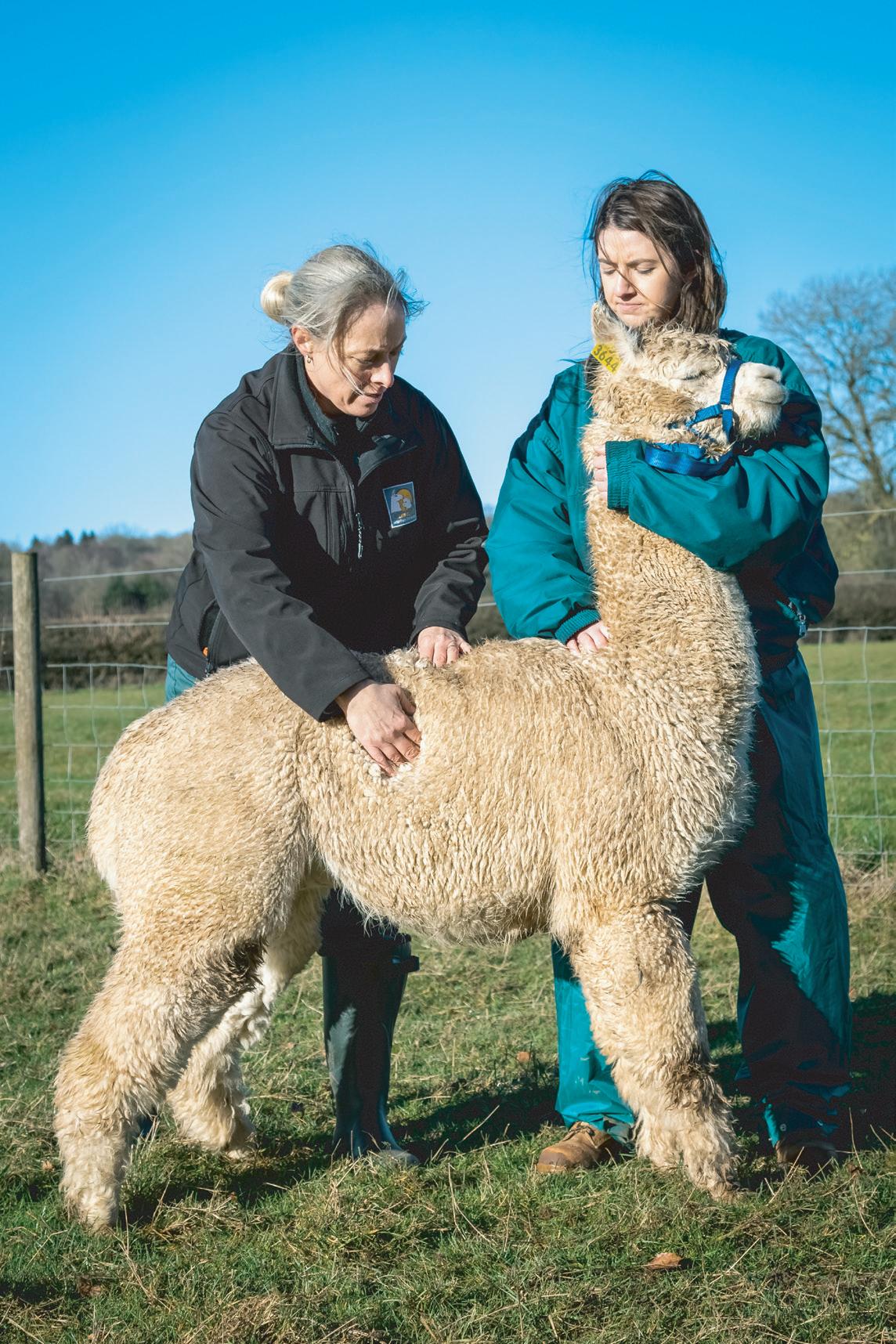
We’re passionate about camelids and share your goal to have a healthy & productive herd.
Committed to ongoing learning in the rapidly developing field of Camelid Health, Medicine, and Reproduction, we stay at the forefront to offer up-to-date care and advice. Our commitment extends to sharing our expertise, enhancing knowledge for amelid aregi


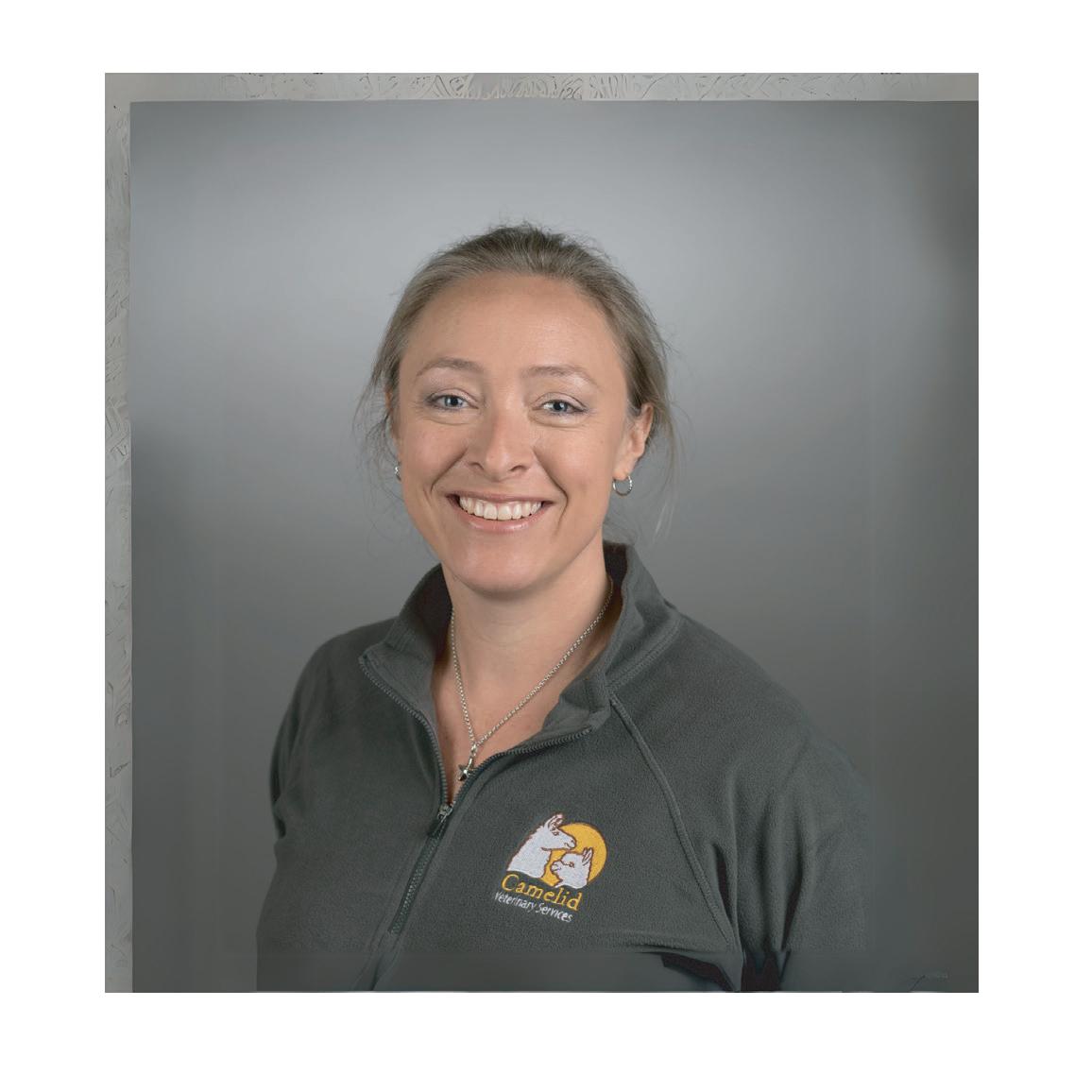

Partner with us for a thriving herd. We support and collaborate for specialised care, optimising camelid health and easing management stress.
Utilize our Camelid-Specific Lab for comprehensive testing (faecal or cria IgG).
Dedicated to enhancing camelid health and welfare, our ser vices are spearheaded by Claire E Whitehead, the only RCVS Specialist in Camelid Health & Production, and published author of The Camelid Care Handbook.

lans are now well under way for our British Alpaca Society Member’s Conference, Celebrating Alpaca Ownership to be held at the Double Tree Hilton Hotel and Conference Centre, Stoke-on-Trent at the beginning of October. We are thrilled that over 110 members are registered representing 74 different alpaca herds and a broad cross-section of the membership. There are still some delegate spaces available if you would like to attend. These can be booked through Grassroots up until the 7 September or until places are full.
We have designed the Conference to offer diverse and engaging sessions that cater to all interests within the alpaca community, ensuring there is something for everyone. Importantly, the event will include time for networking and includes a Friday night drinks reception and buffet as well as a three course Conference dinner on Saturday designed to bring
Molly Gardner will be delivering two keynote talks:
1. Are you getting the most out of your breeding programme?
2. Moving from a bloodstock to a fibre industry.
Molly is an astute observer of nature and behaviour, has a drive for continuous improvement and is an early adopter of research and technologies that can support the outcomes of her passions. Livestock improvement is one of these passions.
For more than 30 years she has brought together the learning from others, research and her personal experience in the breeding of a number of different livestock species. While quite an achievement in itself, the greater reward is in education – sharing and learning with and from others.
Molly has spoken at many international events in Australia, America, Europe and at the WAC when it was held in New Zealand. She runs workshops worldwide on breeding and fleece production in alpaca.
Molly lives on Banks Peninsula on the South Island of New Zealand. Apart from her coloured Suri, she has also purpose-bred an Australian lowline x Galloway cattle herd designed to cope with the harsh climate of Banks Peninsula and (in her own words) the increasingly old lady that manages them!
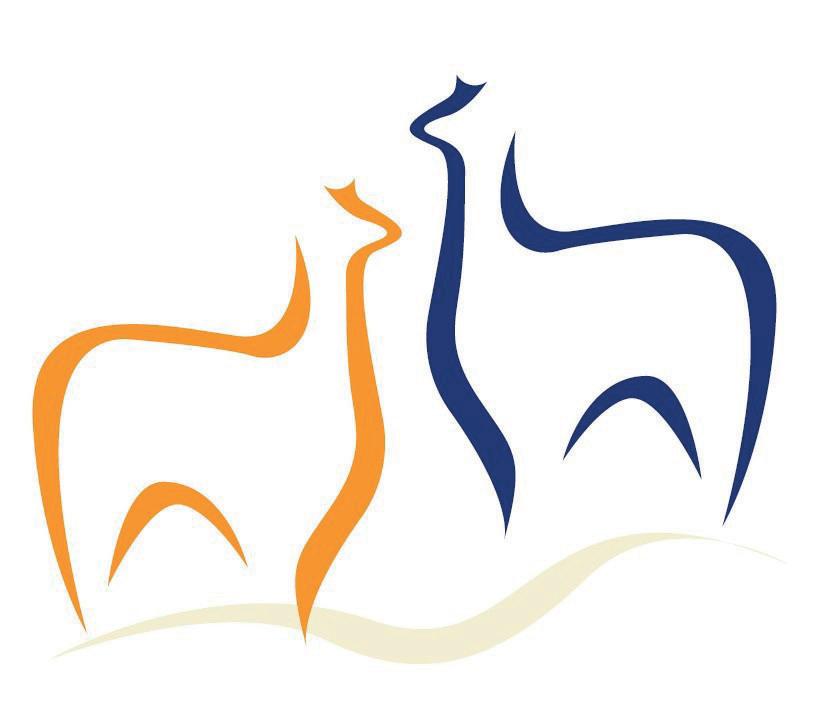
members together in a relaxed and enjoyable setting providing ample opportunities for sharing experiences and building lasting connections within the community.
We are delighted to welcome two leading international Alpaca experts Molly Gardner (Thistledown Alpacas, New Zealand) and Prof. Ahmed Tibary (Washington State University Veterinary School) to deliver our keynote presentations. Both have stellar reputations in their respective fields and are renowned for their engaging, informative presentation styles.
By offering a well-rounded programme that combines education, interaction, and celebration, the event aims to strengthen the bond within the BAS community and promote the sharing of knowledge and expertise. We look forward to welcoming all members to what we hope will be an enriching and enjoyable gathering.


Professor Ahmed Tibary is a world leading research expert on camelid reproduction (Theriogenology) as well as a leading educator from Washington State University Veterinary School. He will be delivering two keynote lectures: 1. Fundamentals of reproductive physiology for better management of alpaca breeding 2. Infertility: what can go wrong with the male and female.
Theriogenology is a discipline within veterinary medicine that focuses on animal reproduction. It encompasses the physiological, pathological, and clinical aspects of reproductive systems in animals. This field includes specialised areas such as veterinary obstetrics, gynaecology, andrology, and assisted reproductive technologies.
Professor Tibary has provided large animal reproductive medicine and surgery; continuing education programmes for veterinarians around the world. He is the author of several scientific publications, six books and over 130 book chapters on camelid, equine and ruminant reproduction. Among Professor Tibary’s many publications is the book, Llama and Alpaca Care: Medicine, Surgery, Reproduction, Nutrition, and Herd Health

As something a little different, we have invited Helen Cowie, Professor of History at the University of York, where she researches and teaches the history of animals and the history of Latin America. She is author of Llama (2017), Victims of Fashion: Animal Commodities in Victorian Britain (2022) and Animals in World History (2025). Helen’s talk entitled From the Andes to the outback: acclimatising alpacas in the British empire traces the movement of alpacas from South America to Britain and its empire. Specifically, the talk looks at the motivations for acclimatising alpacas in Britain and Australia and discusses efforts to improve the animals’ wool through selective breeding. It also asks why alpaca acclimatisation ultimately failed in the Victorian period. Was this due to climate, poor management, inadequate veterinary care or political opposition?
Friday 3 October 4.00 - 15.30
7.30 - 19.00
Saturday 4 October 7.30 - 9.00
9.00 - 9.15
9.15 - 10.15
10.15 - 10.45
10.45 - 11.45
10.45 - 11.45
10.45 - 11.45
10.45 - 11.45
12.00 - 13.00
13.00 - 14.00
14.15 - 15.15
14.15-15.15
14.15 - 15.15
14.15 - 15.15
15.45 - 16.15
16.15 - 17.15
19.30
Sunday 5 October 9.30 - 10.30
10.35 - 11.35
10.35 - 11.35
10.35 - 11.35
10.35 - 11.35
Check-in and registration for early arrivals
Reception: Finger buffet and glass of wine for those staying on Friday in JW’s Reception Room (first floor).
Registration continued
Welcome BAS Chair Sue Loach
KEYNOTE TALK: Molly Gardner (AAA & AANZ Judge, Thistledown Alpacas)
Changing times and the shifting of an industry from blood stock to fibre and the good position Britain is in to do this.
Coffee/Tea Break
Dr Ami Sawran (Westpoint Farm Vets)
Tailoring the Camelid Calendar to your herd’s needs.
Emma Taylor (East Anglia Alpaca Mill)
WORKSHOP – What to do with Fibre and how to prepare your fleece.
Mary-Jo Smith (Bozedown Alpacas and BAS Judge)
Assessing conformation. Why conformation is important and how to assess balance and traits.
Victoria Barrett (Simply Alpaca)
Camelidynamics – work smarter not harder
Buffet Lunch
KEYNOTE TALK: Prof Ahmed Tibary (Washington State University)
Fundamentals of reproductive physiology for better management of alpaca breeding.
Claire Whitehead (Camelid Veterinary Services)
The mite menace: tackling skin problems in alpacas.
Julia Corrigan-Stuart (CS Alpacas, BAS Judge) and Roger Clarke (Amberly & Ambermoon Alpacas, BAS Judge)
WORKSHOP – Maximising potential: preparing alpaca fleece for showing and understanding the judging process
Prof Mike Coffey (SRUC)
Genomic improvement in alpacas – is it possible?
Libby Henson (Co-Director of Grassroots Systems)
Pedigree matters
Tea/Coffee
Prof. Helen Cowie (University of York)
From the Andes to the outback: acclimatising alpacas in the British empire.
Evening three course dinner plus disco to include free raffle draw
KEYNOTE TALK: Molly Gardner (AAA & AANZ Judge, Thistledown Alpacas)
Are you getting the most out of your breeding programme?
Neil & Michelle Payne (West Wight Alpacas and NW Suris)
A diversified alpaca business
Tim Hey (Inca Alpaca and BAS Judge) How to make an alpaca business work
Lissie Gercke (The Livestock Clinic, Veterinary Practice)
The next generation: husbandry and health care management for the juvenile alpaca.
Duncan Pullar (CEO BAS) and Nick Harrington-Smith (Alpaca Evolution and BAS Judge and AOA Judge)
Estimated breeding values for alpacas.
11.50 - 13.00
13.00 - 14.00
14.00 - 15.00
15.00 - 15.15
15.15 - 16.30
Shirley Bettinson (z Alpacas, recently retired BAS Judge) and Panel
The Alpaca fibre industry. Why don’t we have one and where can we go from here?
Buffet Lunch
Prof Ahmed Tibary (Washington State University)
Infertility: what can go wrong with the male and female.
Closing comments
Coffee – Tea


Back in March, Stuart Wilson of Acton Hill Alpacas and I set off on a six-day road trip to Germany for the World Alpaca Conference. The hire vehicle was loaded with BAS promotional material, a handful of National Show Champion of Champions fleeces, and plenty of snacks for the road. We covered over 3,000 km to represent the British Alpaca Society at the World Alpaca Conference in Ilshofen.
After a late-night arrival into Ilshofen, we
were up bright and early to set up the BAS stand, proudly showcasing what British alpacas and their breeders have to offer. There were around 350 alpacas being exhibited, with herds coming from across Germany and Austria. During setup, we had the privilege of watching BAS judge Nick Harrington-Smith work alongside AQA judge Arturo Pena, judging the fleece show.
As well as being able to support our “home team” in the fleece judging, we also got to watch BAS judge Tim Hey collaborate with AQA
judge Amanda VandenBosch in the main ring for the halter judging. To have such a strong and united presence from the British Alpaca Society at an international event was perfect. Naturally, the World Alpaca Conference attracted a large number of international visitors, who were all keen to speak with us about the Society, and what British alpacas had to offer. The fleeces on display added a real “wow factor” to the stand, with many visitors amazed at the quality across the colours in both Huacaya and Suri.
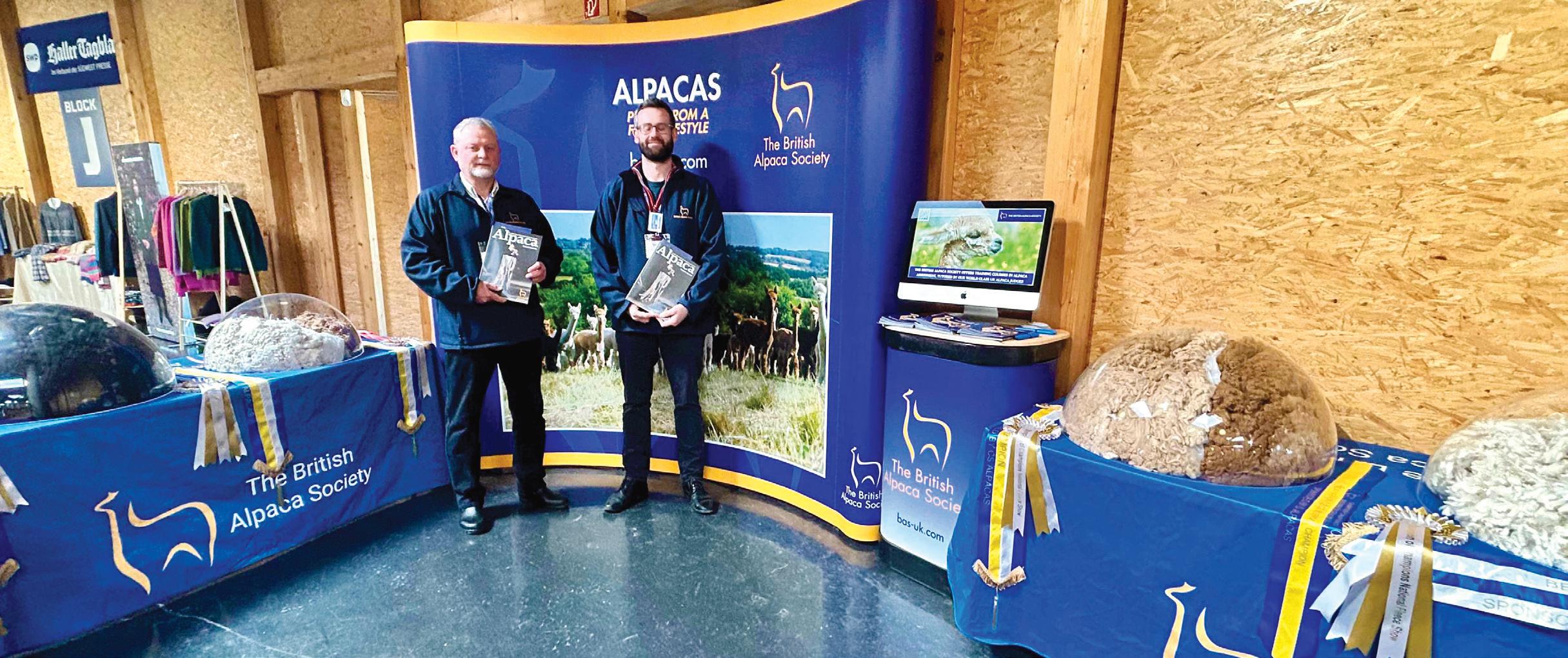
Our only regret? We simply didn’t have enough room in the vehicle to bring more fleeces and domes, which were certainly the main talking point. Although we had a slideshow running with excellent examples of phenotype and fleece shots, the fleeces allowed us to prove that we really do have some of the best alpacas in the world in the UK. We hope this demonstration will encourage more international breeders to visit the UK and attend our National Show. Everyone who visited our stand left agreeing it would be more than worth their while.
Overall, WAC was a fantastic event. Robin Näsemann, Simon Klink, Heinz Kuhne-Pfaff, Manuel Staub, and the rest of the organising team put on a superb show. We felt it was a total success for the Society, and the quality of the British alpacas left such a strong impression that the Society was asked if they would host the next World Alpaca Conference in 2027.
• Since this report, BAS have been asked to hold the World Alpaca Conference in Spring 2027 and they would love to hear from anyone who can volunteer time to help
• This is a big project that will require a lot of work from an energetic Committee. If you would like to be part of that group and have the skills that could help then please let us know. Send an email to Duncan using ceo@bas-uk.com
• The WAC needs a Conference and a social programme that will be attractive to visitors from across the world. Now is your chance is to volunteer to be part of the team. Contact Duncan at the office to find out more.
We asked Nick for his impressions of the Conference. He told us that it was very well organised with extremely well informed International speakers on a broad range of topics, some of whom where relatively new to alpacas and injected some freshness. He found the Fleece show ran very smoothly with the quality being very good in the main. The best fleeces were highly competitive with any fleece anywhere at any fleece show in the world. At the top end there was a greater variety of quality than shows in some countries. The best in the Whites and Fawns were really delightful. Nick judged the females and Arturo, the males. They then came together at the end of the show for the Best


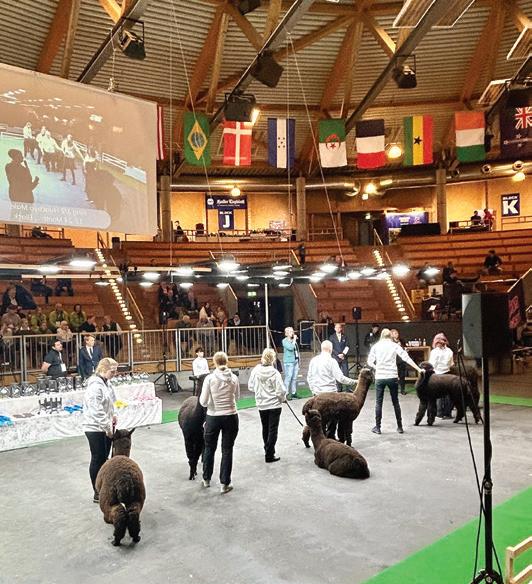
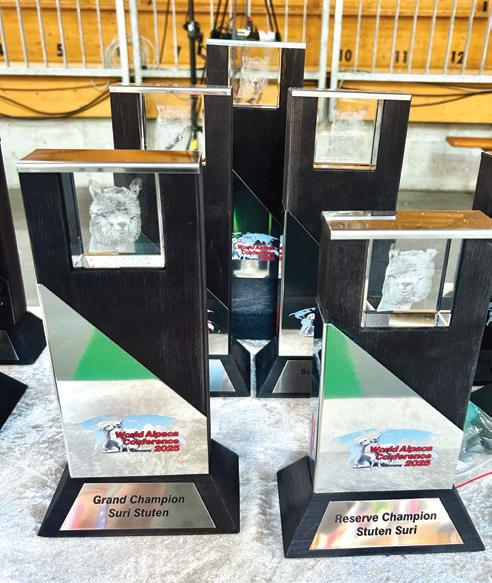

in Show/Judge’s Choice. Nick pointed out that you would normally expect the males to be slightly better as they represent their respective breeding programmes. The scoring system has the ability to level out any personal preferences. Judging fleeces is a big responsibility for the future. They are a way for breeders to get a tangible and reasonable assessment of their fleeces and the written report helps them to make breeding decisions. To judge halter well, you need to be able to judge fleeces says Nick. The results influence future choices for the herd and also aid a focus on management decisions. Nick did say even at this level there were still steps that exhibitors can take to improve
their results at the presentation stage. Some fleeces when examined showed sand and dust. It is now a requirement to ‘noodle’ the fleece and Nick speculated that perhaps that was done in a hurry at shearing and perhaps not all the dirt was removed before packing away. But generally the presentation was very good though sometimes skirting could be more thorough.
Nick said he had an amazing experience and was looked after really well with the best meal he had ever had in any truck stop! He really enjoyed working with Arturo and found the show inspiring and commented that we have a hard act to follow with this exciting and well thought out Congress!
Being invited to judge the world alpaca conference show in Ilshofen Germany was one of the greatest privileges in my alpaca judging career. I joined Amanda VandenBosch as one of the two halter show judges and Amanda carried out the assessment on the females while I considered the males. With alpacas forward representing many countries, I knew the standard would be high and the competition fierce. I wasn’t wrong!
We began judging on Friday evening with the junior black Huacayas and moved on to the grey and the lighter colours. There was a terrific audience and a wonderful atmosphere as the exhibitors, breeders and members of the public looked on with great anticipation at who might win.
As we moved through the age and colour sections I was able to be extremely selective on which alpacas were placed and then went onto championships. In the junior classes I was especially impressed with the substance of bone and volume of the frames

of the alpacas and also the length of fibre they were growing. When presented with the older groups, I was able to judge them thoroughly and those winning would be stand out examples of both breeds.
There were occasions Amanda and I judged together and it was wonderful to share that experience with her and also have her assessment and weighting to add to mine. In the end the Supreme Champion was an adult
brown female who not only looked the part and was a good size but she also carried an extremely dense, long and uniform fleece and it was her density that gave her the advantage over others in the Supreme line up.
I would like to congratulate Robin, Simon and Heinz plus their team for organising such a wonderful show and also for their excellent hospitality. The show will live in my memory as a most spectacular event for years to come.

Alpaca magazine are curious about alpaca organisations in other countries as these fascinating animals have now spread far and wide from their origins.

BAS was happy to welcome the Polish Alpaca Breeders Association in 2023 and the Association also came over for the National Show.
They have just set up a registry and have put on a BAS course so we are pleased that they answered our questions on how they do things in Poland.
What is your association called ? Polski Związek Hodowców Alpak – Polish Alpaca Breeders Association.
When was your association founded? Our association was founded in 2012.
How many members do you have? We have 260 members.
How many alpacas are on your registry?
There are around 4000 alpacas in our registry.
When/where is your National (biggest show)? Our National Show will be in Lublin on 25/26 October.
How many Board members do you have? We have three Board members.
What is your import and export policy?
We are open to import alpacas based on recommendations from the government. We export alpacas to both western and eastern Europe.
Where do your members look for breeding alpacas to improve their herds?
Our members look all over the world from New Zealand to USA as well as Europe and between breeders in Poland.
What are the priorities of breeders for improving their alpacas?
Main priorities of Polish alpaca breeders when it comes to improving their herds are correct conformation, fleece quality, and genetic improvement.
What is the proportion of Suri and Huacaya Alpaca?
We have just over 200 Suri and around 3800 Huacaya in our registry.
Are there some areas of your country where most alpacas are found? Alpaca breeding is emerging across Poland, regions like Mazovia, Eastern Poland, and Warmian-Masurian Voivodeship are notable for their active involvement in alpaca farming, driven by favourable conditions and the integration of tourism.
What are your priorities for your members and your aims in the next five years?
As a fairly new industry it really varies across breeders on what their goals are over next upcoming years.
Have you identified any trends in your alpaca scene that your members are involved with?
Not noticeable ones but we keep alert.
Estimated Breeding Values (EBVs) help breeders achieve the aims of their breeding plan quicker and with greater accuracy than they can without them.
The benefits of an EBV system are that the breeding progression is:
• Permanent – the benefits stay with the alpaca for life
• Cumulative – improvements made in one generation are added to those made in previous generations, and
• Sustainable – improvements can continue to be made for hundreds of generations.
EBVs will help breeders make better breeding decisions, identify good and bad alpacas early, and can help with the valuation when buying and selling. EBVs separate out the effects of genetics and environment.
EBV stands for “estimated breeding value” and uses measurements to calculate an estimate of the genetic worth of an alpaca (having removed environmental and management effects) for one or more traits of interest. EBVs can only be calculated for traits that can be measured, like fleece weight and micron diameter, so they always have units like kg or microns. Alongside measurements of the alpaca itself the system uses measurements from all related alpacas - parents, offspring, aunts and uncle, etc. This data from related alpacas improves the estimate of genetic worth of an individual. The more data there is available the better the estimate that can be made.
In the example below the reliability of the estimate is represented by the narrowing blue cone. The true value of the fibre diameter EBV is 17.5 micron but if we only had measures from the individual the EBV might be anywhere between 19 and 15 micron. Using measures from parents as well means the estimate improves, to give a measure between 18 and 16 and if you add in further data from, say, 10 progeny the estimate could narrow to between 17 and 18.
EBVs are recalculated every year to reflect the increased data available. So, for a widely used stud male after a few years there could be 30 or 40 offspring contributing to his EBV and it probably would not move as much as it might when the first few offspring contribute to his EBV calculation.
EBVs use measures of a trait (for example micron diameter of fibre) and the pedigree (which animal is related to which) to disentangle the effects of genetics and environment. The measurement taken on a particular trait at a particular time is the product of the genes the alpaca has, and the management environment it has experienced (like feed availability and disease challenges), as well as other factors like age, and sex.
One way to think about it is to imagine identical twins separated at birth and exposed to vastly different feeding regimes, one good and one poor. At a year old one twin could conceivably be 50% heavier than the other. The environment has made the difference, but we know they have the same genetic potential for growth because they are identical.
So, when it comes to breeding, the quality of offspring from either twin would be expected to be the same and their EBVs would reflect that despite their very different appearance.
The heritability of a trait is a way of describing how much of the trait is controlled by the genes the alpaca has and how much impact the environment and management have. For FD the heritability is around 40% which means 40% of what you measure is down to genetics and 60% down to management. This is a high level of heritability for a complex trait. In dairy cows the heritability of milk yield is only 12% but that industry has made huge genetic gains.
Pedigree data Performance data
By using data from the registry and measures taken by breeders, EBVs can be calculated. In practice breeders need to weigh the shorn fleece, whether skirted or not, and send off a mid-side sample for analysis as well as record shearing dates.
The table below summarises what is required and what the EBV calculated will be like.
Animal Name
Microchip ID
Date of Birth
Sex
Herd
Micron average diameter Yes – negative finer than average
Standard Deviation micron diameter Yes – negative less variation than average
Comfort Factor % Yes – negative less coarse fibres than average
The way genes are passed from one generation to the next means that for lots of traits predicting the outcome in the offspring is difficult. For complex traits like micron of fleece this is because there are many genes that contribute to the quality of fleece produced.
If you mated a male with an EBV of 18 micron to a female with an EBV of 22 micron you might expect the offspring to have an EBV of 20 micron. And that is what happens on average BUT, and it is a big BUT, the possible range of outcomes for the offspring could be anywhere from 16 to 24 micron. Which is why you need to measure the performance of offspring even from fully performance recorded parents. In practice we don’t see enough offspring from a single set of parents to see the full range of possible outcomes.
If you breed an alpaca that turns out to be better than either of its parents, then well done! Interestingly the odds of that happening are just the same as breeding an alpaca that is worse than both of its parents.
Spinning fineness –micron Yes – negative finer than average
Staple length mm Yes – positive is longer than average
Curvature Dg/mm Yes – positive more crimp than average
Fleece weight (kg) Yes (standardised to 365 days) positive heavier than average
Skirted (Yes or No)
Date shearing
Previous shearing date
Days growth
Colour
Breed type
Micron measures from the same alpaca in a series of years
Persistence of fineness –probably expressed as micron per year, smaller good.
To make it easy to do there is an Excel template which the breeder can fill in and send to the BAS CEO by email.
The raw data remains confidential to the owners. The aim is for EBVs derived from the raw data to be published to help members understand how EBVs work and make breeding decisions. Historic data is also valuable if you have it in your records because the calculation of persistence of fineness needs repeated measures.
The aim is that BAS members will use the data to:
• help match males and females to get the best possible offspring
• find animals that will help your breeding programme
• value animals for sale or purchase
• measure the overall merit of your herd and the genetic progress being made year on year.
>> Continued on next page
The first figure shows, unsurprisingly that there is a good correlation between the measured fibre diameter (the vertical axis) and the FD EBV (horizontal ais).
Looking at the yellow double ended arrow you can see the range, in measured micron, (approximately 14 to 28) all at the same EBV value of -2.0. This means that the genetic merit of all the -2.0 animals is the same for FD but the phenotype, what is measured and what you see could be in a range of 14 microns. The difference will be a function of age, sex, nutrition and other management factors. Without EBVs it is much harder to identify “best” alpacas in the population.
The graph above shows the rate of progress in FD in Huacaya alpacas by their year of birth. The sloping red line shows that each year the average FD gets finer by 0.0398 of a micron. This is slow progress and reflects
+ 79.471
the fact that EBVs have not been used for the vast majority the parent selections made. The herds making the fastest progress are improving their FD by 0.1 micron per year. In theory this rate of progress could be increased 3-fold using EBVs if all the optimum matings for increased fineness were made. This rate of progress does not happen in practice because there are other traits and qualities to consider.
The data supplied so far for the Suri analysis is from 44 herds (950 alpacas) and the Huacaya is data from 76 herds (4070 alpacas). More data from more herds makes for a more robust analysis.
If you are not already part of the project, then contact the BAS CEO for more information: ✉ ceo@bas-uk.com
Lovely knitted items
Penrose alpaca duvets and pillows
Alpaca yarn and fleece
Courses (BAS affiliated)
Alpacas for sale
So, come and visit soon!
Mulberry Grange, Red Hall Lane
Higher Penley, Wrexham LL13 ONA
Tel: 07713 639 447 or 01978 710224

Email: mulberryalpacas@btconnect.com
We’re 4 miles north of Ellesmere
Open Saturdays 10.00 until 16.00 and by appointment TELPHONE ORDERS WELCOME



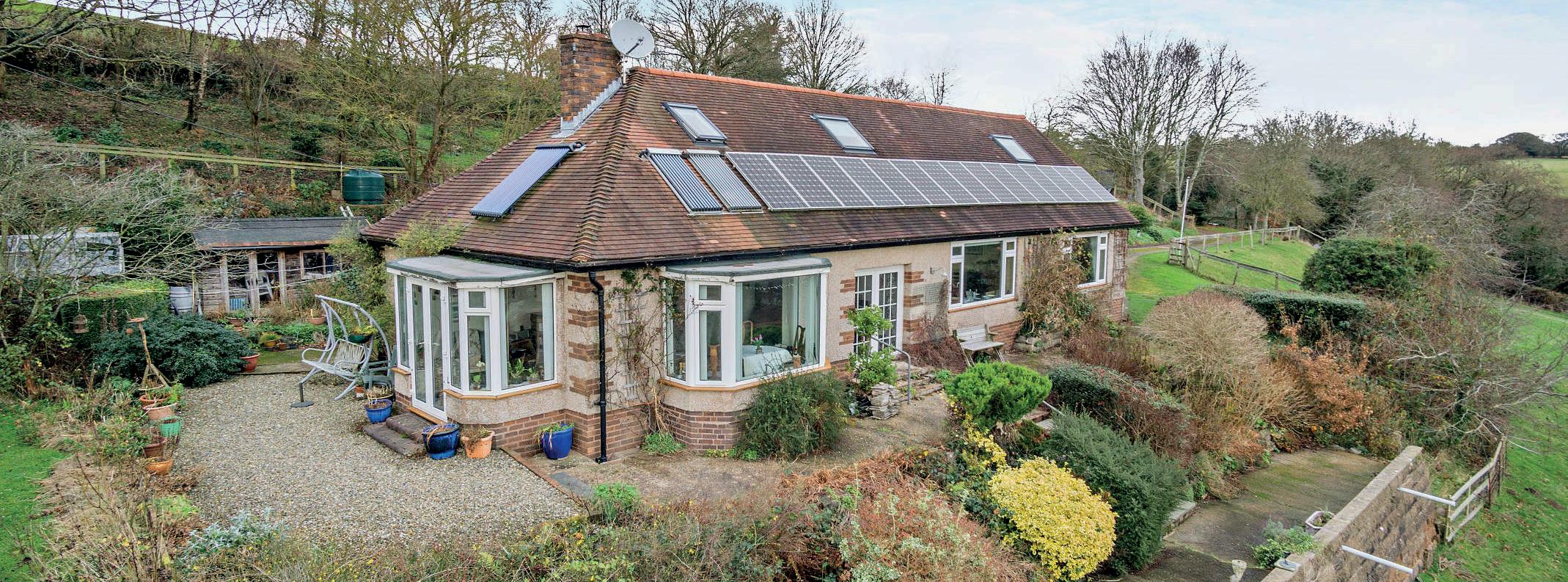



Nigel and Margaret Retallack started Carpalla Alpacas in 2010 after deciding they could be the ideal livestock venture for their new 20 acre farm near St Austell in Cornwall. Nigel comes from an agricultural background with a deep seated love of animals and Margaret has always enjoyed crafting as a hobby along with her love of animals so it all seemed to make sense. Nigel takes up the story so far.
We started as most people do by admiring alpacas at various events but little did we know how much they were about to take over our lives.
With a limited budget but bags of enthusiasm we headed off to see Helen Macdonald at Alpaca Power where we put together the start of an alpaca journey.
Higher Carpalla Farm was a run down farmstead without a dwelling but it did have an old static without planning and lots of run down tin sheds.
With a lot of work we have slowly but surely improved things.
We started our Carpalla journey living in a very old and tatty, thirty year old static caravan. Six years later and having subjected ourselves to living in drafty and wet conditions we managed to get our planning for the bungalow which now sits here on the farm. This was a huge relief as I was no longer getting up in the mornings to the feeling of wet carpet under my feet from the previous night of rain seeping in. The whole experience of getting the planning permission basically went to plan but took longer and was more stressful than either of us realistically expected.
With planning secured we have been able to kick on a bit and concentrate our efforts with the alpacas into improving the herd both through genetics and our management.
A lot of work was recently done on the very tatty long barn which is the base for the alpacas and this has made a huge difference to our winter management of the herd. It’s now a large, bright, airy space for
housing and handling with the ever useful easy pen and room to over winter the animals.
Feeding has seen some major changes too with our transition nearly two years ago onto Garvo 6006 Alpaca plus pellets, available from Animals First. I have to say this is a great feed having very high levels of vitamin D and other vitamins and trace elements and does seem to compliment our farm. Cria are eating the pellets far quicker than the previous feeds and since using it we have not had one refuse hard feed at weaning. Leg angulation in cria has also been good as they are getting what they need both in mother’s milk and when they start eating the pellets.
We also feed good haylage as needed as I’m allergic to the dust in hay and it makes for a better working environment in the barn. Talking of dust we use Green Mile cardboard bedding to soak up the moisture produced by the alpacas in the barn and this although expensive works a treat. As an aside the fibre mill is pleased we use cardboard and haylage as there is very little contamination in the fleeces unlike with hay and straw.
As for our improving genetics this is a topic on which I regularly describe myself as an anorak.

As a brief history of our studs through the years our first stud males were a brown and a fawn that came from West Webburn Alpacas and our first two years cria came predominantly from the fawn. The improvement in the next generation was marked.

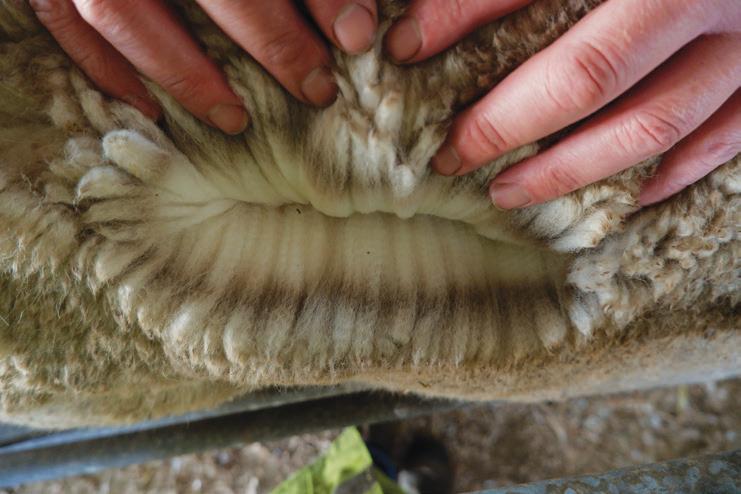
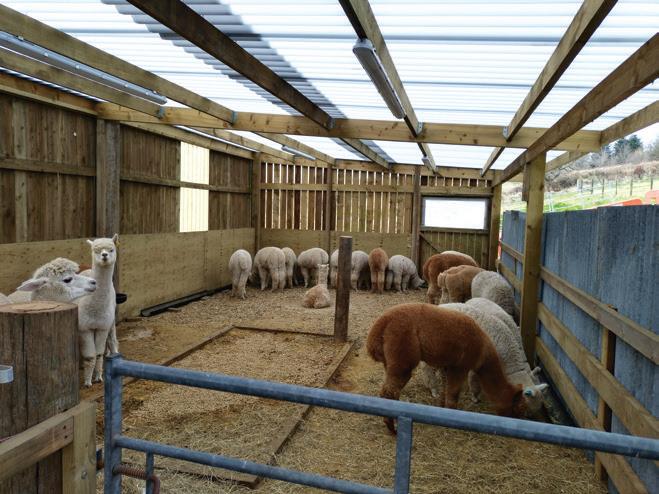
However, with improvement comes the desire for even more improvement and the next male purchase was a large white Jaquinto son named CME Tantalus. This started a great friendship with Chas and Rachel and I’d like to thank them both for their support over the years. He was followed by Humdinger, a white Diplomat son from Ashwood and High Five a Snowmass Sizlin Hot son from Willowbrook to add colour. We also briefly used Accoyo Europe Issocrates and Cambridge Arthur. More recently we purchased, Devon County Show Supreme Champion CME Dion, again from Chas and Rachel who has been used widely and we are now seeing his daughters give birth to our next generation of cria.
Additional vitamin and mineral pellets (3mm) for the maintenance needs of adult alpacas
✓ Garvo alpaca plus is actually very cost effective compared to many other complementary feeds, especially when you consider the feed rate.
✓ The feed rate for an alpaca is 1mg/kg of bodyweight (approximately 60g for the average alpaca) giving a very reasonable daily feed cost.
Optimised Vitamin D Ration:
• Helps prevent skeletal problems
• Strengthens immune system
• Increases fertility rates
• Improves coat condition and growth



Scientifically proven to be the most absorbent on the market but also contains almost no dust.

Optimal fibre length
Encourage chewing for salivation to maintain acidity balance in foregut and maintain teeth health. Contains Prebiotics & Probiotics
These aid digestion and aid rumination to improve digest efficiency, therefore, makes feeding rate improved and more cost effective.


We are very excited about this generation as we have obtained two Fowberry Constantine sons out of some really strong family lines at Acton Hill alpacas. We got to know Stuart and Angela through our shared love of talking alpaca genetics and bloodlines and are grateful for their support.
Acton Hill Le Chevalier is a full brother to AHL Jailbreaker and AHL Constantina and a half brother to Acton Hill El Capitan who has progeny making waves on the show circuit. These four are all out of Houghton Bettina and she is proving to be a very prepotent dam at AHL by Cambridge Navigator.
>> Continued on next page

Our breeding aim is to maximise fibre production and improve fibre quality generation upon generation, with a view to providing the ultimate fibre for yarn production.

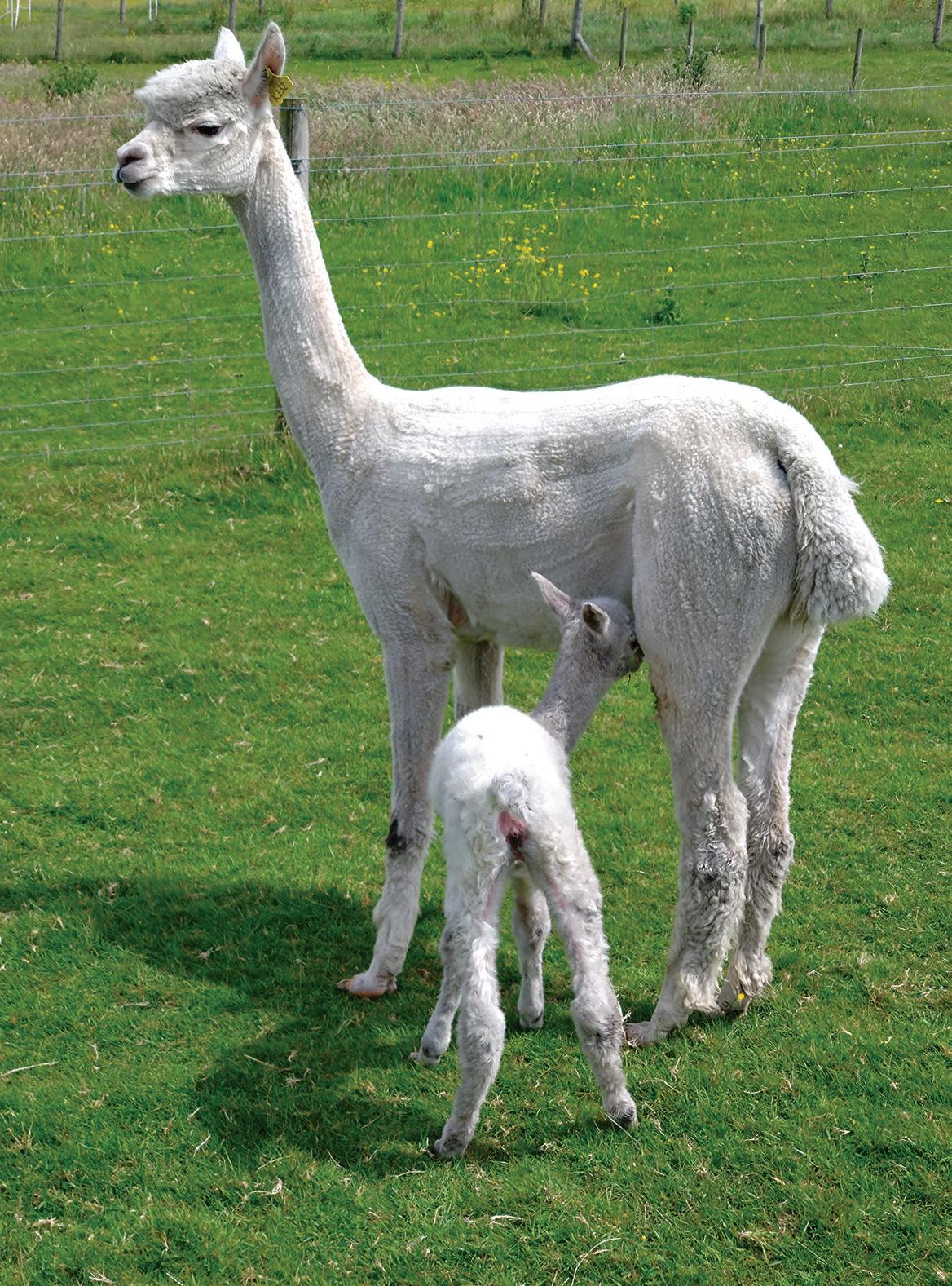

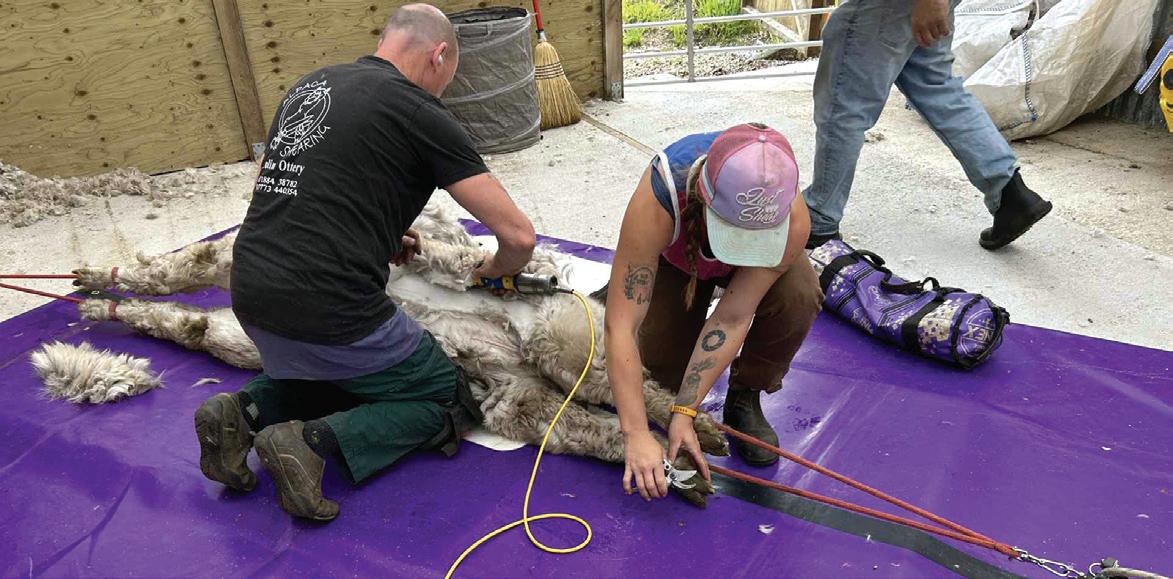
Acton Hill Hari-beau is the second boy we purchased and is a lovely male who has already done well in the fleece shows for us and is out of a Beck Brow First Edition daughter. We are quietly excited by his first son out of Carpalla Kiss Me Quick, a Dion daughter.
While on the subject of herd improvement I decided to add some quality females last year as a birthday present to myself. If you follow our Carpalla alpacas, facebook page you will have seen that we purchased three new girls. Two are EP Cambridge Trail Blazer daughters Jade Amadala and Houghton Venus. Amadala is a big step forward and we look forward to seeing what she can do. We already have a show winning daughter from Venus that came with her as a cria.
You may be asking why two Trail Blazer daughters. Well the above named El Capitan is by Trail Blazer and he also has another son in a very prominent herd and I was impressed by the density, uniformity and overall quality. The other girl is a Stoneleigh Firedraggon daughter called Ashwood Quebec. Again this girl is packed full of great genetics with The Diplomat and Tor De Force also in the mix.
Hopefully going forward we can blend these genetics together and create some exciting animals to improve the herd and our show prospects.
On the subject of shows our first foray into the world of showing alpacas came at the local Cornwall Camelid Association show and this proved to be a very good start.
Since this we have shown at most of the local shows in halter and fleece, getting to know the local exhibitors and making friends along the way.
Most recently again at our local CCA group show we were delighted to take Supreme Huacaya and Judges’ Choice Huacaya so we are moving in the right direction.
Margaret’s crafting is starting to take off with sales at various events including our flagship Royal Cornwall Show stand. Items she makes include scarves, berets and mitts along with scrunchies to hold back long hair and she produces fluid art alpacas and resin products to name but a few. The mitts have been particularly successful as the design we are using seems to be very popular. You may have seen the two pairs of mitts that won the ‘Item for Hands’ category at the BAS National Alpaca Show with. We send most of our fibre to UK Alpaca and buy back their quality yarns and posh socks to sell on to the public.
More recently we have had some fantastic spinning done by Emma and Chris at East Anglia Alpaca Mill to create our 100% Carpalla alpaca yarns in natural colours. These are selling well and have sold even better when made into fingerless mitts and hairbands.
A huge amount of work goes into the preparation of the fibre for spinning and this is definitely a labour of love. It’s very rewarding when we get the feedback from Chris at the mill to say it is looking good and well prepared.
It is important for us all to remember that the alpaca is a fibre animal and the alpaca industry will live or die depending on how well we all present our fleeces to the processors and on a constantly improving national herd.
Our breeding policy for the future will be determined by the amount of high quality fibre each animal is producing with a desire to be improving both yield and quality with every new generation born.
As for colour, we now firmly believe that quality is more important than having a particular colour of animal and we will be striving to maximise the value of each year’s clip. We use Collin Ottery to shear the herd and do our best to improve the process and the care of the fleeces each year.
I want Carpalla Alpacas to be known for its exceptionally well prepared fibre. Hopefully this will mean that our financial returns will improve as our fibre clip becomes more reliable and of a higher quality.
I have played an active role in the running of our local BAS group The Cornwall Camelid Association, serving on the committee for many years, holding numerous roles and positions. My latest brief is the welfare rep and we also hold the CCA vet day here.

Email: alpaca2shear@yahoo.co.uk Colin Ottery: The Alpaca Shearer Alpaca Shearing since 2005
Please contact me for a friendly and professional service with competitive rates
Telephone Colin Ottery for a friendly and professional service with competitive rates. 01884 38782 07773 440354
All size herds considered 07746 957110 or 07773 440354
Email: alpaca2shear@gmail.com www.alpaca2shear.com

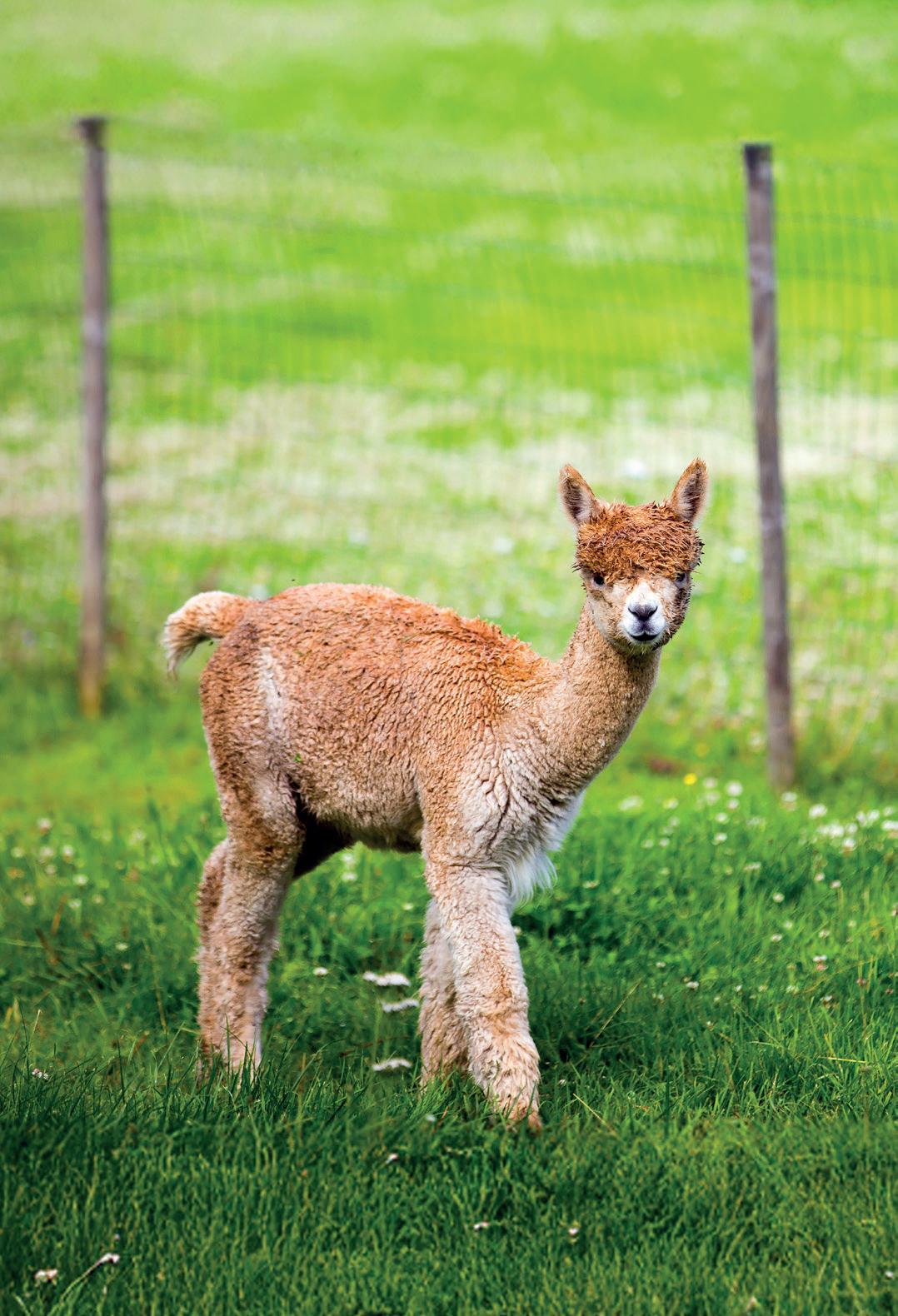

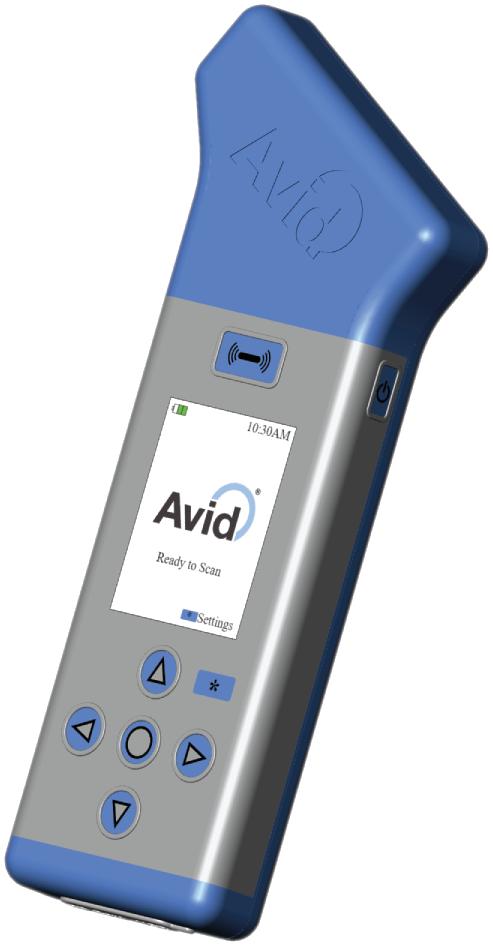

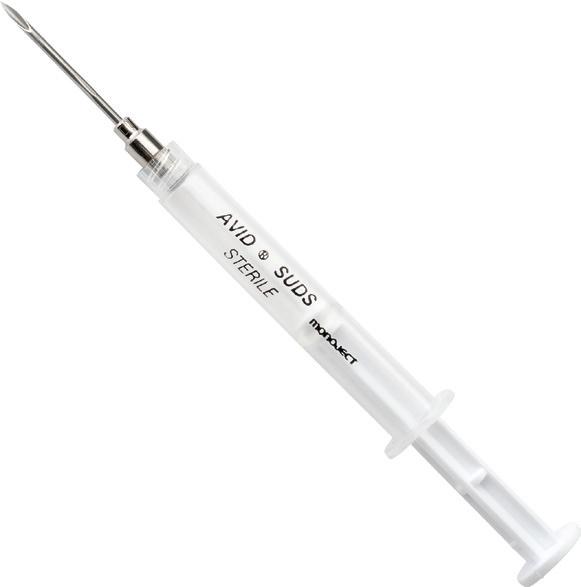
Established in 2009 by Victoria and Roger Barrett, Simply Alpaca is a small family business determined to breed and raise alpacas and llamas using only kind and respectful methods. Here they look at how to gain trust and consent from your animals.
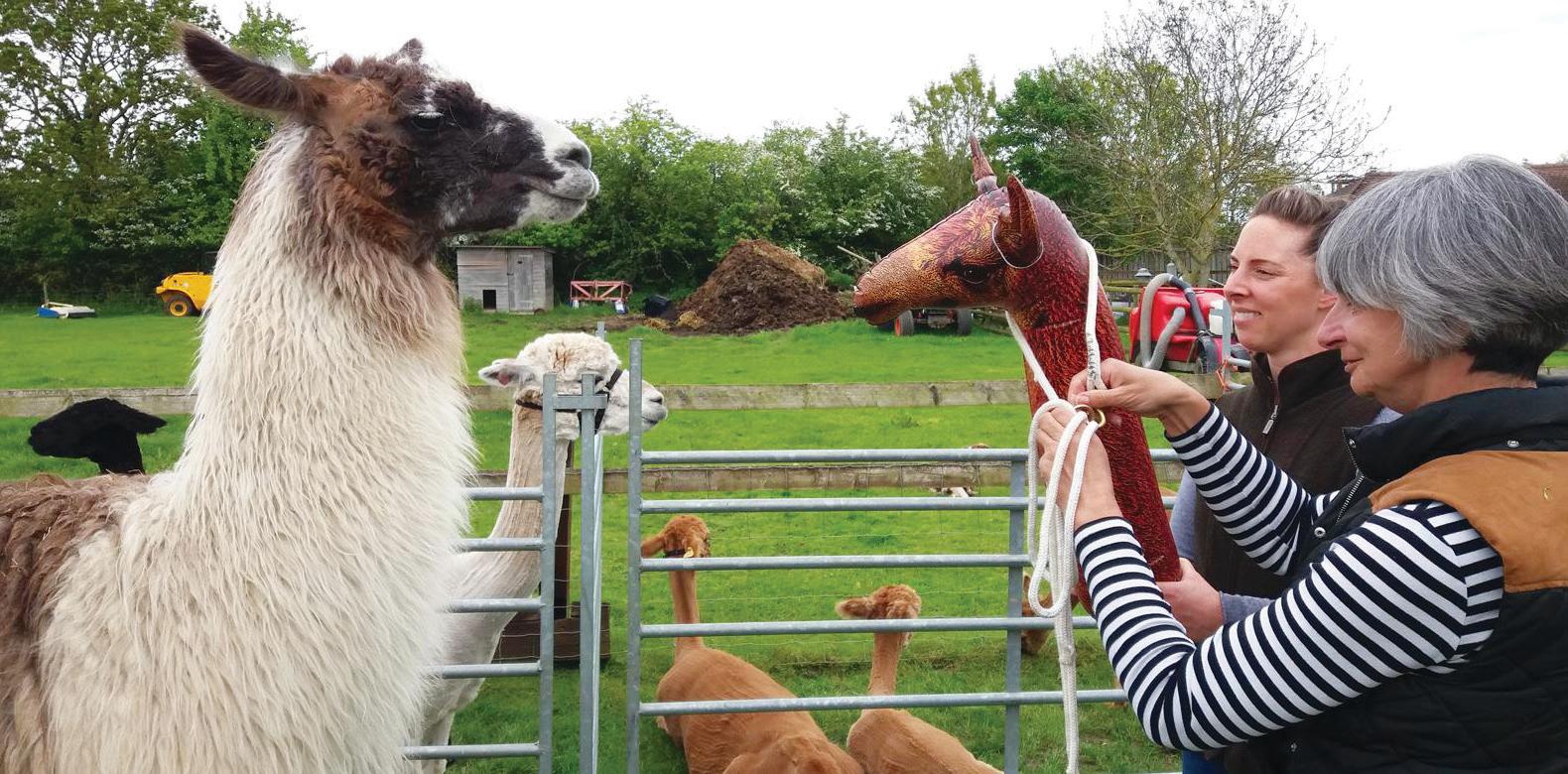
Practising under supervision with inflatables before working with live animals
In the life of every alpaca (and owner) there has to fall a little rain, at toenail, injection and shearing time, even haltering, if there isn’t a relationship between animal and human based on trust.
CAMELIDynamics offers ways of achieving these tasks without the use of force and with the co-operation of the animal. Typically, in working with animals we tend to think in terms of good and bad, reward or punishment and consequently the labelling of our animals “aggressive”, “stubborn”, “pushy”, “spitty”, “kicky” – you get the idea, these are “bad”. Whereas what we want is “friendly” and “biddable”.
In order to achieve that, it might be necessary to reflect on our part in creating those characteristics – are we inadvertently creating a self-fulfilling prophecy? We pull an animal unwilling to move, then call him stubborn so pull harder, to which he resists and we just get into a state of circular reasoning which never considers what the real reason might be for his reluctance to move, perhaps he has pain somewhere or the halter is uncomfortable.
CAMELIDynamics looks at the science of behaviour; a single unit of behaviour can be broken down into Antecedent- BehaviourConsequence, ABC. The antecedent is the setting in which the behaviour occurs and includes everything from physical health, pregnancy status, weather, who they are penned with and of course, you the handler. When we look at what occurred immediately before the undesirable behaviour occurs, we have the opportunity to start to understand what might be causing it for example “my animal spits in the show ring”. When asked, what was happening just before? ”I was picking bits out of his fleece”. The answer to avoid the spit was to stop picking!
So how does that translate into everyday handling and husbandry?
On a CAMELIDynamics Handler course we will look at alpaca motivation and how we can create an environment using antecedent arrangements that maximise the opportunity for the animals to do what we want, not just because we want it, but because it feels the best thing for them to do.
>> Continued on next page

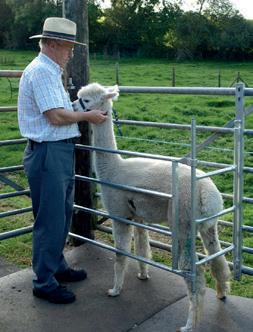
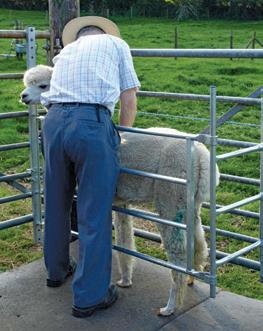





Southern Alpaca Services offers premium Alpaca Stud Services with a choice of seven high-quality males, ensuring superior breeding for your herd. We cater to your convenience with:
Based in Brockenhurst, New Forest
Available anywhere in the South of England
A joint collaboration between Faraway and Grainmarket Alpaca enables us to provide expert husbandry services and professional advice to support the health and well-being of your alpacas.
Basic Easy-Pen £324.00 + VAT
Aluminium Hurdles 4ft, 6ft and 8ft wide
From £52.00 +VAT each Alpaca Equipment:
www.marshwood-alpacas.co.uk Tel: 01297 678181 Geoff Bugler
Available now
Partner with Southern Alpaca Services and experience dedication, expertise, and commitment to excellence in alpaca care.
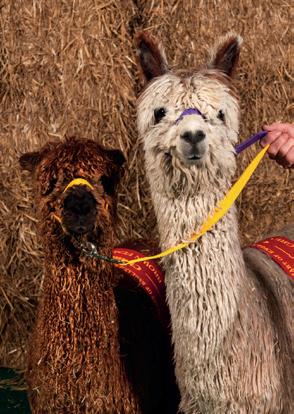
Scan the QR code to find out more or visit https://farawayalpacas.co.uk/faraway-stud-services
Alpaca & Llama handler training with...


Is your relationship with your animals all you had hoped for?
How can Camelidynamics techniques help me on my alpaca journey?
Camelidynamics is an approach to and collection of methods that represent the most positive, least intrusive techniques for training and managing alpacas.
This two day handling course will change the relationship you have with your animals forever.
Understand why camelids behave the way they do and learn kind and efficient methods that are science-based, for safe handling and husbandry that’s fun.
Tell your vet that we have courses for them too.
For those interested in finding out how this approach can inform and support your human/alpaca interactions in the therapeutic arena, we are now offering courses for owners and professionals.
Working with Alpacas in Animal Assisted Activity or Therapy.
HANDLER COURSES: 29th-30th July – 30th-31st August
ANIMAL ASSISTED ACTIVITY COURSES: 22nd-24th September
ANIMAL ASSISTED THERAPY COURSE: 22nd-25th September


For more details and to book your places go to www.SimplyAlpaca.co.uk







Minimal contact while desensitising body and legs to touch

Like working in a catch pen in the company of a couple of other animals, by using our body language to communicate we are not going to chase them into a corner and grab, but quite the opposite, that they are free to move until they feel safe enough to stop on their own. What do we want our animals to do most of the time? That’s right – nothing! We want them to stand still for toenails, injections and haltering. When an alpaca feels safe enough to stand still and not fear being restricted or restrained from moving in our presence, we have a great foundation for moving on and building that relationship based on trust.
CAMELIDynamics is also the basis for the courses Working with Alpacas and Llamas in Animal Assisted Activity and Therapy. Without a good relationship with your animals and the highest concern for their welfare in this work, how would it ever be possible to demonstrate compassion, empathy, and for the health professional working with their animals in therapy (as I do as a qualified counsellor) to demonstrate a therapeutic relationship based on mutual respect and care?
Having considered how CAMELIDynamics can inform our animal work, these courses then look at best practice in introducing animals to and incorporating them into working with humans for their health and wellbeing.
In addition to the handling courses, Victoria has recently launched three- and four-day courses for people interested in activity and therapy work with alpacas called Working with Alpacas and Llamas in Animal Assisted Interventions and Therapy
Dates for this and the handling courses can be found on the website or by emailing Victoria:
✉ simplyalpaca@btinternet.com
TV www.simplyalpaca.co.uk/training


















Summer, whilst always welcome, brings a unique set of challenges for alpaca owners. A proactive approach to husbandry and health management can help prevent common issues and ensure your herd thrives during the warmer months.
Shearing is paramount for alpaca well-being in summer, mitigating heat stress and allowing for thorough health assessments. Ideally, shearing should be completed early in the season. However, be prepared for potential temperature drops after early shearing by having rugs on hand, especially for youngstock. Later shearing dates reduce the risk of needing to rug but can increase heat stress and flystrike risk.
The shearing process also offers an excellent opportunity for a comprehensive health MOT:
• Toes: With animals restrained, inspect foot pads and trim overgrown toenails. Trim along the nail walls, avoiding the sensitive quick. If unsure, seek guidance from a vet or experienced owner.
• Teeth: Fighting teeth and incisors can be assessed at shearing, with a view to booking in any modifications with your vet. Incisor trimming should be considered on a case-by-case basis, balancing the alpaca's ability to eat with any impinging on the nose or preventing proper mouth closure. Modifications to teeth are acts of veterinary surgery by law and should only be made by a vet following appropriate diagnosis – so please coordinate with your vet over any dental concerns.
• Body Condition Scoring: Shearing reveals the true body condition hidden beneath the fibre. Conduct a hands-on assessment of fat coverage over the spine (between ribs and pelvis) using a 1-5 or 1-10 scale. This allows for tailored dietary adjustments to maintain ideal weight, crucial for reproductive health, lactation and fibre quality.
Several health issues tend to emerge or worsen during summer:
• Internal parasites: A long, wet period provides ideal conditions for many types of gut worms, which seem to arrive earlier and earlier. Regular body condition scoring and faecal egg counts are crucial, as well as assessment of mucous membrane colour. Signs of heavy parasite burdens include weight loss, lethargy, and pale mucous membranes, even in the absence of diarrhoea. Targeted treatment based on identified parasite burdens and types is vital to prevent resistance. Avoid routine, untargeted worming, and if you do happen to worm in an emergency – please at least take a sample for baseline testing so that your vet can ascertain whether the wormer was effective.
• Skin conditions: Post-shearing, the skin becomes more visible, revealing issues like mite infestations or bacterial and fungal infections. Different mites require different treatments of varying lengths and types. Inappropriate use of ivermectin, as can occur in these cases (as well as untargeted worming) can lead to resistance and environmental contamination. If treatment fails, further diagnostics like biopsies may be necessary.
• Flystrike: A serious summertime emergency, flystrike can advance rapidly. Holistic fly control involves sprays or pour-on repellents, coupled with environmental management like fly traps or parasitic wasps. Be vigilant for "wet patches" or discoloured areas on the fibre, as these can be early signs. Promptly clipping the affected area can buy valuable time before veterinary attendance.
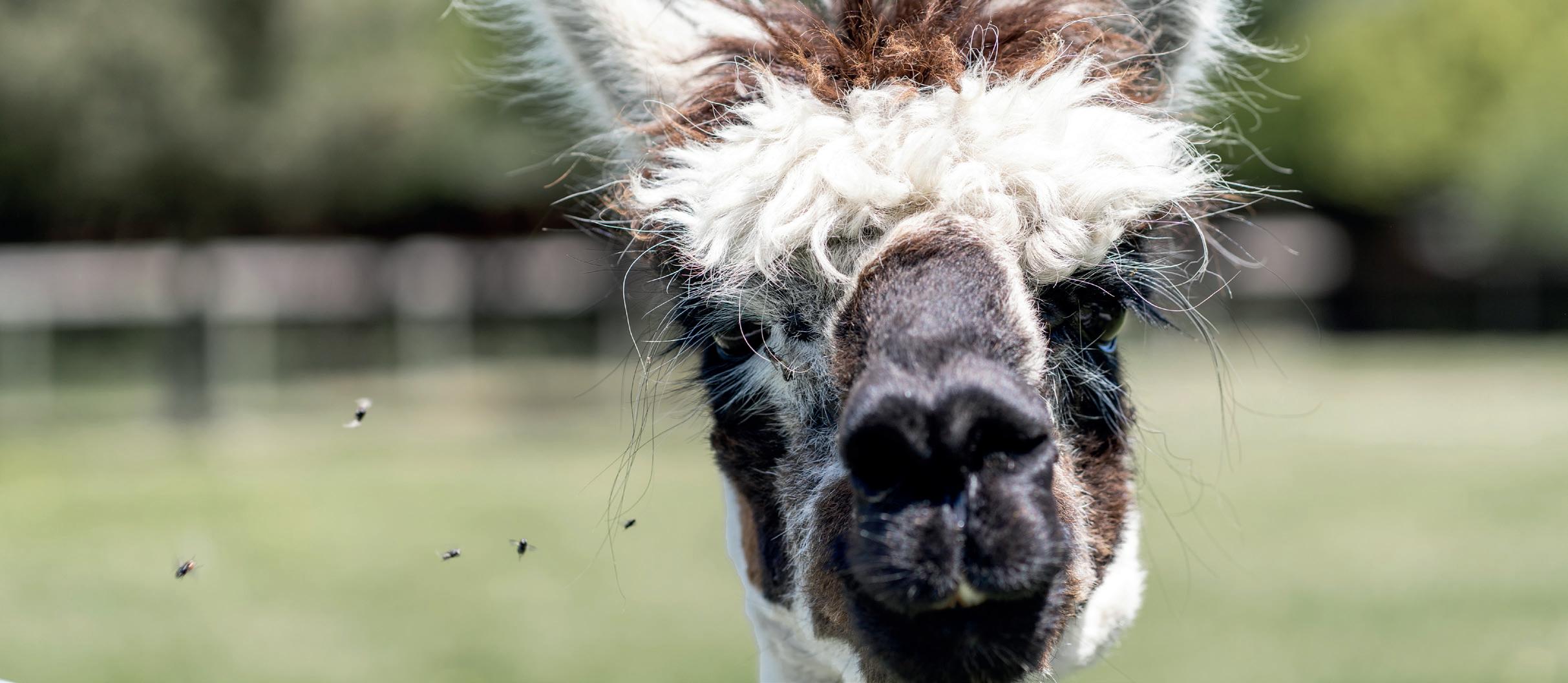
• Cria concerns: Young alpacas failing to thrive are a common summer complaint. While a small weight loss in the first 24 hours is normal, subsequent daily gains of 250-500g are expected. Any less, or a loss, warrants a veterinary check. Investigate potential causes, including poor milk supply in the dam, failure of passive transfer, or congenital abnormalities like a non-patent anus, misaligned jaw, or choanal atresia (a developmental issue preventing flow of air through the nostrils). Early intervention is key, as owner instinct about a cria's progress is often accurate.
• Clostridial disease vaccination: When administering vaccines yourself, ensure vaccines are kept cold to maintain efficacy and used within an appropriate timeframe (sometimes mere hours) of opening.
The datasheet will advise on broach time. It is advised not to vaccinate on the day of shearing, as immune responses on stressful husbandry days could be reduced. Discuss your herd's risk profile and handling capabilities with your vet to determine the best vaccination schedule.
• Bluetongue Virus 3 (BTV3): As we enter another high-risk period for midges, discuss BTV3 vaccination with your vet, considering your farm’s specific risk profile. Though cases have yet to be confirmed in camelids in the UK, we should still contribute to surveillance efforts by investigating any stillbirths, abortions, premature cria, or unexpectedly barren females, as well as any suspicious clinical signs of disease.
A comprehensive health plan is invaluable for every herd. Don't hesitate to consult your veterinarian to help you create a task calendar, demonstrate techniques, and develop a tailored health plan for your alpacas. Trust your instincts; addressing concerns early can prevent them from escalating into chronic problems.
Once again, I wish you a happy, healthy, and productive summer with your alpacas.

Dr Ami Sawran graduated from Liverpool in 2011 and went on to undertake a production animal internship and complete a PhD in dairy cattle lameness at the Royal Veterinary College. Ami is clinical director of Westpoint Farm Vets in Chelmsford and sits on the VetPartners Farm Executive board. She is an RCVS Advanced Practitioner in Camelid Practice and runs the Camelid Clinical Interest Group at VetPartners, aiming to deliver relatable CPD and resources to help farm practitioners cater to camelid needs. She was awarded a Fellowship of the RCVS in 2024 for meritorious contributions to clinical practice for her work in the camelid field.

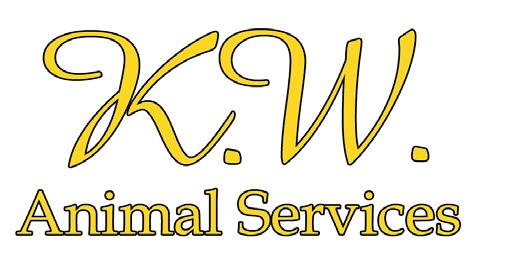
Are you looking for or in need of a little extra help with your animals and their routine husbandry tasks? KW animal services offers that extra pair of hands. Jobs include: Shearing of alpacas | Vaccinations | Worming



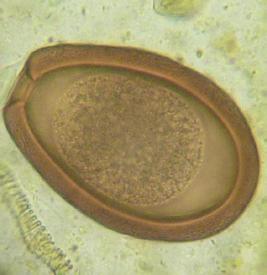

The National Sheep Association said earlier this year that an ongoing failure of UK dog owners to recognise the threat their pet animals pose to farm livestock is leading to continued devastating attacks on sheep.
This message came as the sheep farming charity began its annual sheep worrying by dogs awareness week back in April, and shared its latest results from its annual survey on the scale and impact of the issue. Findings revealed that 87% of survey respondents experienced a dog attack on their sheep flock in the last 12 months and the cause of this is mostly identified as the simple refusal of dog owners to keep their pet on a lead whilst walking in the countryside.
Almost half of this year’s survey respondents didn’t pursue compensation, reporting feelings of helplessness if and when cases were reported to the police. Unfortunately there have been some sickening attacks on alpacas too.
But now there is some better news in that finally a Bill which will give police greater powers to clamp down on dog attacks on farmed animals has passed in the House of Commons and is one step closer to becoming law.
On Friday 4 July 2025, the Dogs (Protection of Livestock) (Amendment) Bill was passed by the House of Commons. The Bill not only gives police more powers to act – but extends the scope of livestock (including alpacas)
worrying to better protect alpacas and llamas; and adds roads and paths to the list of locations where an offence can take place – which will make more animals safer and in more places too.
Harriet Main, Public Affairs Manager at the RSPCA, said: “We welcome this vital development in Parliament which has seen the Livestock Worrying Bill passed in the House of Commons. It will now go to the House of Lords where we hope it will continue to progress and soon be enshrined in law. This Bill will have the potential to protect thousands of animals and support many farmers throughout the UK who have to pick up the pieces when their livestock are sadly attacked
Whilst many dog owners may think there is no harm done if their dog momentarily chases farmed animals and comes back quickly without injuring them, being chased by a dog causes the animal stress and anxiety. This can cause lots of problems for farmed animals - and even lead to pregnancy loss, which is particularly tragic. And severe attacks can have a devastating effect on farmed animals, resulting in injury and even death.
It’s important to remember that livestock worrying is also a welfare concern for dogs too. They could become injured during an incident and it is also lawful for farmers to shoot a dog to protect their farmed animals in some situations – which no-one wants to happen.
This Bill is very important to alpaca owners and we look forward to the confirmation that it has become law.

Deborah Maxwell, Nith Valley Alpacas, Dumfries & Galloway attended a therapy webinar and gives us her thoughts.
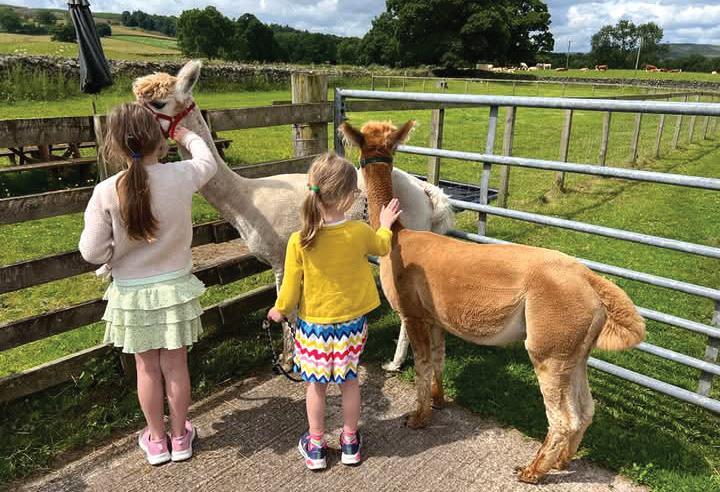
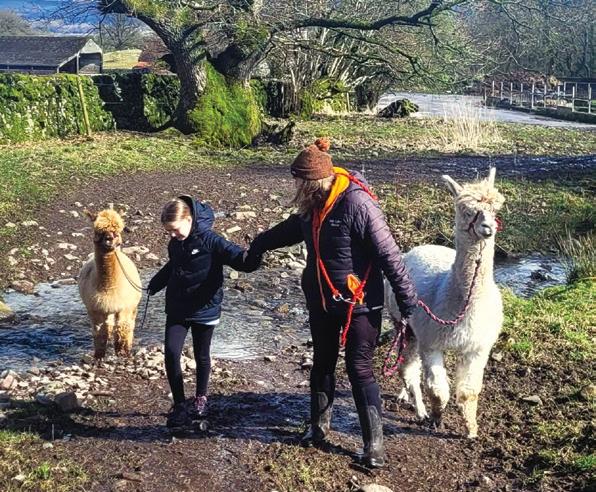


Iwas really pleased to be able to attend Sarah Unwin’s therapy webinar recently, organised by the North Shires and North Wales Alpaca Group. As someone who treks their alpacas with the public, including disability and supported living groups, I think the more education towards neurodiversity the better. ‘Walk with a Difference’ to make a difference
It has helped me in my approach to all visitors, making sure that everyone is comfortable with what, when and how we conduct the visit.
It is valuable to recognise that sensory overload may present difficulties with some aspects of the visit, so asking about triggers is very important, as is taking time to find out a little about how people feel on the day. Sometimes it may be necessary to guide a hand, or even hold a hand, and I always ask if the person is comfortable with touch.
I keep visits either one-to-one with a support carer in attendance or a maximum of eight for a group booking and I do not charge for carers. This means I can spend quality time with individuals and allow people time to express any feelings that may develop during their time with the alpacas. Tears are common on these visits but laughter outweighs all. I strive to
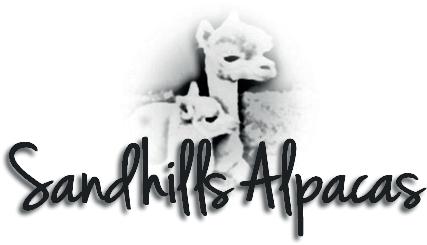
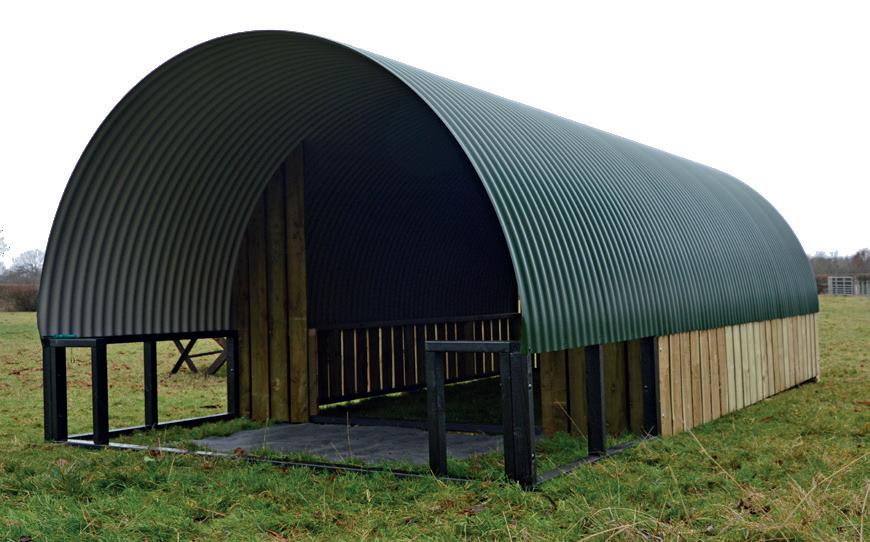
Weather:
create an inclusive environment and this course is helping me do that as I can re-watch at any time.
I have found in the eight years I have owned these wonderful creatures emotions can sometimes overwhelm people and having the education through webinars such as that given by Sarah Unwin has given me confidence to work with many social support groups in Dumfries and Galloway. The key things I took away from the webinar included ‘knowing your animals’.
I have 14 castrated male alpacas but not all are suitable for use in this field of work, in fact, not all my alpacas trek although all take part (on their own terms) in our ‘Meet & Greet’ visits.
The health and safety of my team is paramount to me and I see no point in putting any animal or human into a possible stressful situation for any reason. For me, being able to assess and change quickly when things don’t feel right on a visit has been made easier by attending the courses through NSNWAG group. Communication is key when working with any group and everyone appreciates having their voice listened too.
I love sharing my alpacas with everyone and hope to continue building on this side of my alpaca journey with the opportunity of more courses in the future.
Protecting against adverse weather
Ventilation:
Provide good air flow
Flies:
Shelter against summer heat and flies
Adaptability:
Water drinkers, troughs and deep bedding can all be added
Husbandry:
A great place to complete feet-trimming, vitamin drenches or as a quarantine area
Appearance:
Practical and attractive
Size:
Various options and sizes available. Please visit our website for more details.
Being an Alpaca breeder the welfare of our animals is paramount so the pods are designed and manufactured by ourselves taking this into account. We designed the Alpaca pods for our own herd and are now pleased to offer these for sale.
Members meet on a regular basis to talk alpaca, organise events, seminars, workshops, and generally share their experience and knowledge on all things alpaca.
The groups are not exclusive (to BAS members or by Geography) and are open to all. Their aim is to allow new and existing members to come together, socialise with other breeders in their locale and learn more about alpacas. Should you be an owner, prospective owner, or just interested in these fascinating animals, your regional group will always make you welcome.
The groups also provide invaluable expertise by providing qualified judges, welfare advice, nutritionists and lecturers, with the emphasis always on self-help, accessibility and local initiative. Each group organises its own area slightly differently; some hold their meetings in the same place and some move venues. Meetings are organised around barbecues, suppers, coffee mornings and workshops; most groups ask for a small contribution to cover the costs of the event.
No group in your area? Form your own.
The BAS Regional Groups are designed to provide local activities for and contacts between members within a region.
Groups are responsible for organising meetings for members and for disseminating information from the Society to members and passing feedback to the Society.
Groups are responsible for their own financial affairs and meetings of the group should be financially self-funding.
Alpaca shows within the Group’s area would be organised by the Regional Group with assistance from Grassroots Systems Ltd (if required) with regard to online entries and catalogues. Shows are expected to be self-financing.
Groups are encouraged to provide reports of their activities to the Editor of Alpaca magazine.
Notices regarding Group events can be




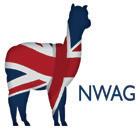


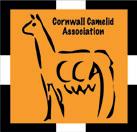


included in the BAS Newsletter sent by email to all members, posted in the Facebook BAS Chat Forum and posted on the appropriate page(s) of the BAS website – www.bas-uk.com. Details of events should be sent to ceo@bas-uk.com
To be recognised by the Society, the Group must have an appointed Secretary and Treasurer. It must have its own bank account for Group funds. When these items are in place, details should be submitted to the BAS Board which will consider the formal recognition of the Group.
Minutes of meetings must be produced to the BAS CEO and be made available if requested. It is suggested that those interested in establishing a new Regional Group hold a meeting of members within the area to gauge interest and to determine what type of activities local members would support.


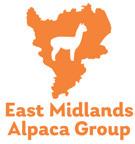
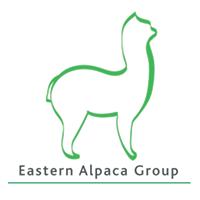

A list of all Regional Group contacts is included on the BAS website and it is also sent to all new members who are encouraged to join the one nearest to them.
• Northern Ireland Alpaca Group
• North West Alpaca Group
• North Shires and North Wales Alpaca Group
• West Shires Alpaca Group
• South Wales Regional Alpaca Group
• Cornwall Camelid Association
• South West Group (SWAG)
• Heart of England Alpaca Group
• South East Alpaca Group
• Eastern Alpaca Group
• East Midlands Alpaca Group
• Yorkshire Alpaca Group
• North East and Borders Alpaca Group
• Scottish Group
• Suri Network UK Group










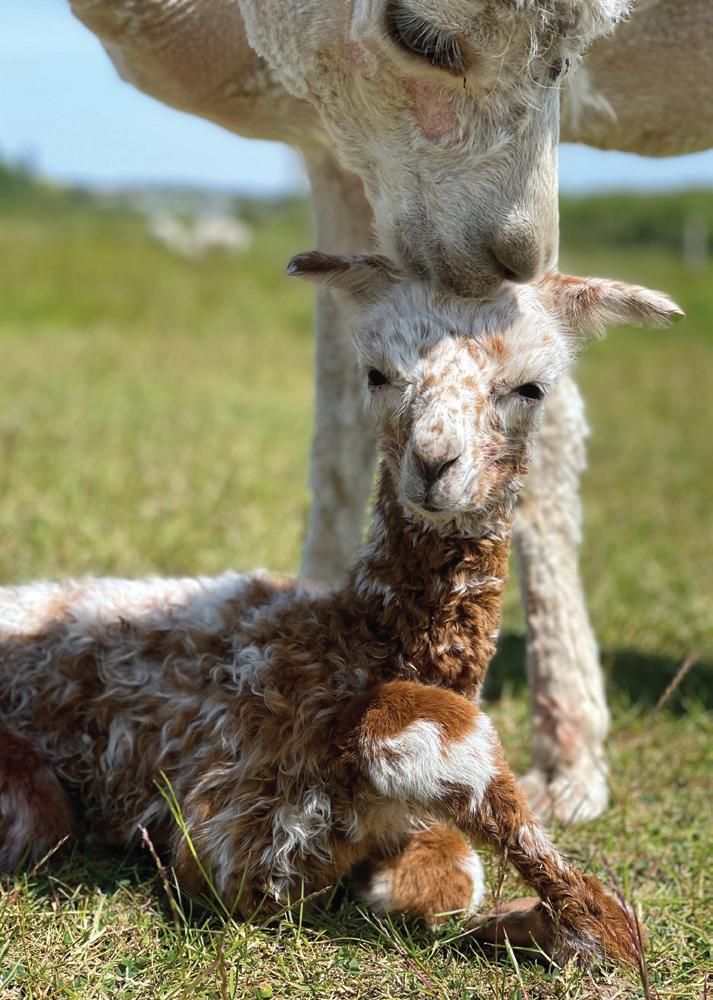
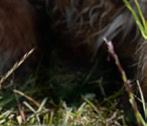











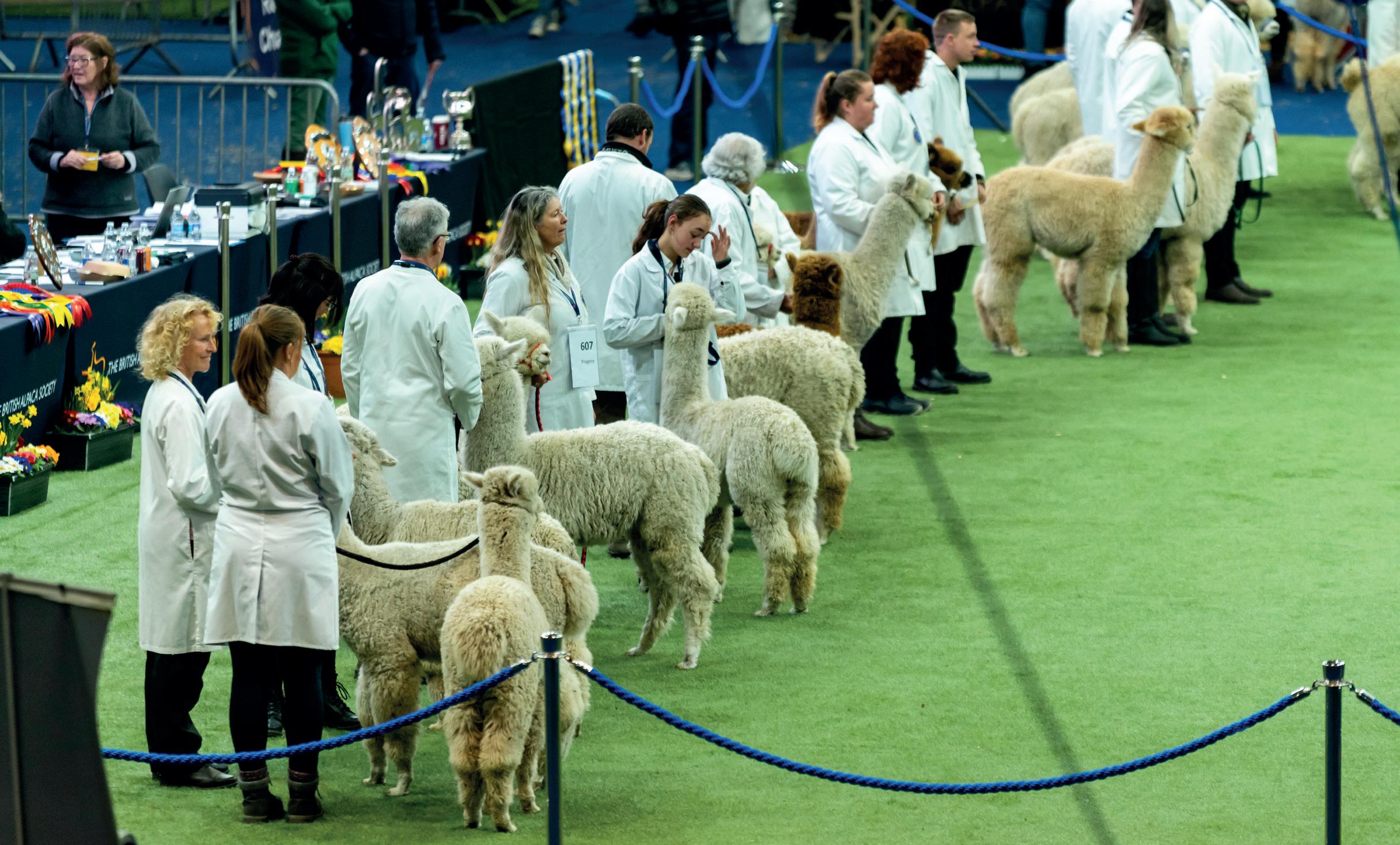
www.ingridweelmedia.com

Alpaca shows are an integral segment of the industry and play an important role in keeping our industry strong and thriving.
They provide an avenue for breeders to showcase the best of their breeding programmes. It is an opportunity to not only market our alpacas, but the show ring is also a place for social interaction. The shows are run to strict BAS rules which are accepted as a worldwide standard for showing alpacas and fleece.
With kind permission of Camelid Connections and updated for UK exhibitors www.camelidconnections.com.au
Are you entering a show? This checklist will assist you
• Check the microchip is working if using as an identification at shows
• Check the ear tag is correct if you are using as an identification at shows
• Check your alpaca’s front teeth are aligned with the top pad
• Check your alpaca has a straight tail with no kinks
• Check your alpaca’s ears are not banana shaped or folded in
• Check your alpaca’s toenails are tidy and not overgrown
• If male, check that he has two testicles
• Check that there are no mites on your alpaca
• Check your alpaca has good conformation
• Check your alpaca’s legs are consistent with the showing rules, without faults
• Make sure you have a white coat for show presentation Print out a copy of the Showing Rules for your reference. Available in the members’ portal on the BAS website under Documents, Policies & Accounts > Shows and Events Documents
The NWAG Championship show took place on Saturday 5 April at the Borderway Mart in Carlisle. Numbers were very similar to the previous year with only one less in 25. Of significant difference was the reduced number of Suri's with only five entered this year compared to 17 the year before. Despite the unexpected work going on in the car park at the mart, everyone managed to get in and unloaded without any drama.
Our prestigious chair and show organiser, Barbara Hetherington (Beck Brow Alpacas), had handed over her boxes of rosettes and paperwork to Sue Smith (Simjest Alpacas). It could all have gone horribly wrong but with the massive organisational support from Michael Henderson, Viv Darcy, Bev Morgan and Deborah Maxwell, and stewarding support from Sam Ellershaw, Scarlett Milburn and Jayne Hodgson the day went without a hitch.
I particularly want to highlight a big push to engage with the public. We decided to do this at the NWAG AGM and our new secretary, Viv Darcy teamed up with Bev Morgan to really do everything they could, at short notice, to bring the public into a space they would not be passing by chance, and introduce them to these wonderful animals. Inspired by the 'Taking Alpacas to the People' pack shared with all regional groups mixed with some local knowledge and creativity, we were able to offer a 'walk and talk' experience, stalls of alpaca related produce and a crafting table for children . Visitors were able to get close to Suris and Huacayas penned in the main hall and have all their questions answered. They could see and touch fleece on the animal, through all its stages of production including the finished garment. We were all a bit concerned that no one would come over, but Viv and Bev's enthusiastic marketing, especially at the supermarket across the road, ensured we had plenty of visitors throughout the day.
Our esteemed Judge for the day was Jay Holland who with apprentice, Kim Murray ensured all present received clear and considered oral reasoning. We were also honoured to have with us a guest from Peru, Alpaca Judge, Jose Berdejo. Jose got involved in looking through fleeces of those placed and we all thoroughly enjoyed listening to his expertise and insight.
Huacaya Supreme Champion: Old Felton Ivy (UKBAS44168)
Best British Bred Huacaya: Classical MileEnd Aquarius II (UKBAS39026)
Suri Supreme Champion: Legacy Suri Karrera (BNBAS18811)
Judges Choice Huacaya: Rivenherd Keira (UKBAS46311)
Judges Choice Suri: Wellow Isn't It Ironic (UKBAS46294)
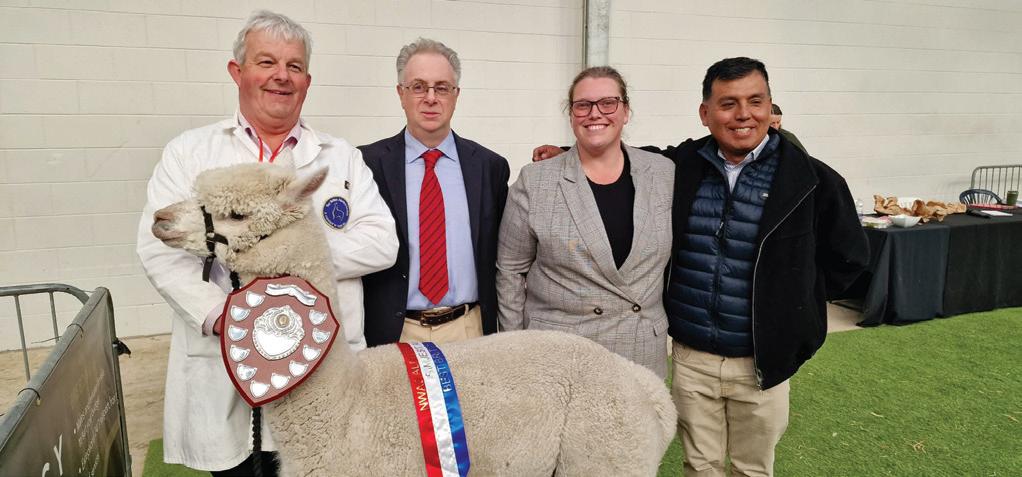








This year’s Fiesta definitely had a “Love is all around us…” feel, as you can see from the photos, with a very relaxed and enjoyable atmosphere over the whole weekend. What with the introduction of Tandem Judging with two UK BAS Judges, the change in the Running Order to facilitate the dark breeders feeling involved throughout the whole weekend, the running of our silent stud auction again and the introduction of a flipbook catalogue, which was updated regularly throughout the show, we were determined that the Fiesta would take place, even though we could only cater for herds in the Restricted Zones due to the Blue Tongue restrictions.
Roger Clarke and Mary-Jo Smith were our judges this year, taking on the challenge of judging circa 180 alpacas over a day and a half, imparting informative, amusing and expert evaluations of all the alpacas at the show. They were ably assisted by our ring steward Gary Naish.
Our annual Craft Competition, sponsored by Lulu Oliver of Softly Softly, organised by Liz Berry and judged by Shirley Bettinson of Toft Alpacas was again a great success. The judge’s challenge trophy,

donated by Kerry Lord, was awarded to Clare Graham for her cushion made from alpaca. Hand spun yarn was won by Moat Farm Alpacas, wearable items by Rushmere Alpacas, woven neckwear and socks by Liz Berry, non-woven and miscellaneous by Backyard Alpacas and Child’s hat and toys by CS Alpacas.
Our thanks go to Cypher Crystal for continuing to contribute to our Champions trophies and massive thanks go to Ingrid Weel, our amazing photographer – remember to check out her website, www.ingridweelmedia.com for all the Fiesta photographs. Huge thanks go to Rob Bettinson, always at the end of the microphone, educating everyone on everything alpaca and keeping everyone amused over the weekend.
Winners of the HoEAG Fiesta 2025
Supreme Huacaya Champion and Best British Huacaya went to Limestone Bollinger and Supreme Suri Champion went to Springfarm Eureka, with CS Alpacas Weisman Gecko taking Best British Suri. Judges Choice Huacaya went to Limestone Bohai and Suri went to Springfarm Prince Caspian. >> Continued on next page


LookingforQualityGenetics,choice ofcolour,well-trainedalpacas? Looknofurther...
• Alpacasforsale
• Agistmentservices
• Adoptanalpaca
• Alpacaexperiences
• Alpacawalks
• Handknitted alpacaproducts

The Chairman’s Trophy, awarded this year for the most successful new exhibitor, went to Enchanted Alpacas. The Large Breeders award went to CS Alpacas, Medium Breeders award went to Limestone Alpacas and Small Breeders award went to Kingstanding Alpacas.
Female Huacaya Grey: Limestone Bohai
Male Huacaya Grey: Cold Comfort Domino
Female Huacaya Black: Chinchero Paprika
Male Huacaya Black: Chinchero Flint
Female Huacaya Brown: Artwork Iona \
Male Huacaya Brown: Toft Anka
Female Huacaya Fawn: CS Just Dance (Limestone)
Male Huacaya Fawn: Redens Intrigue
Female Huacaya Light: Castlings Heavenly Harmonia
Male Huacaya Light: Limestone Sulu
Female Huacaya White: Castlings Hualca Hualca Hera
Male Huacaya White: Limestone Bollinger
Female Suri Fawn: CS Alpacas Kala
Male Suri Fawn: Springfarm Prince Caspian
Female Suri Light: CS Alpacas Hera
Male Suri Light: CS Alpacas Tarzan
Female Suri White: CS Alpacas Weismann Gecko
Male Suri White: Springfarm Eureka
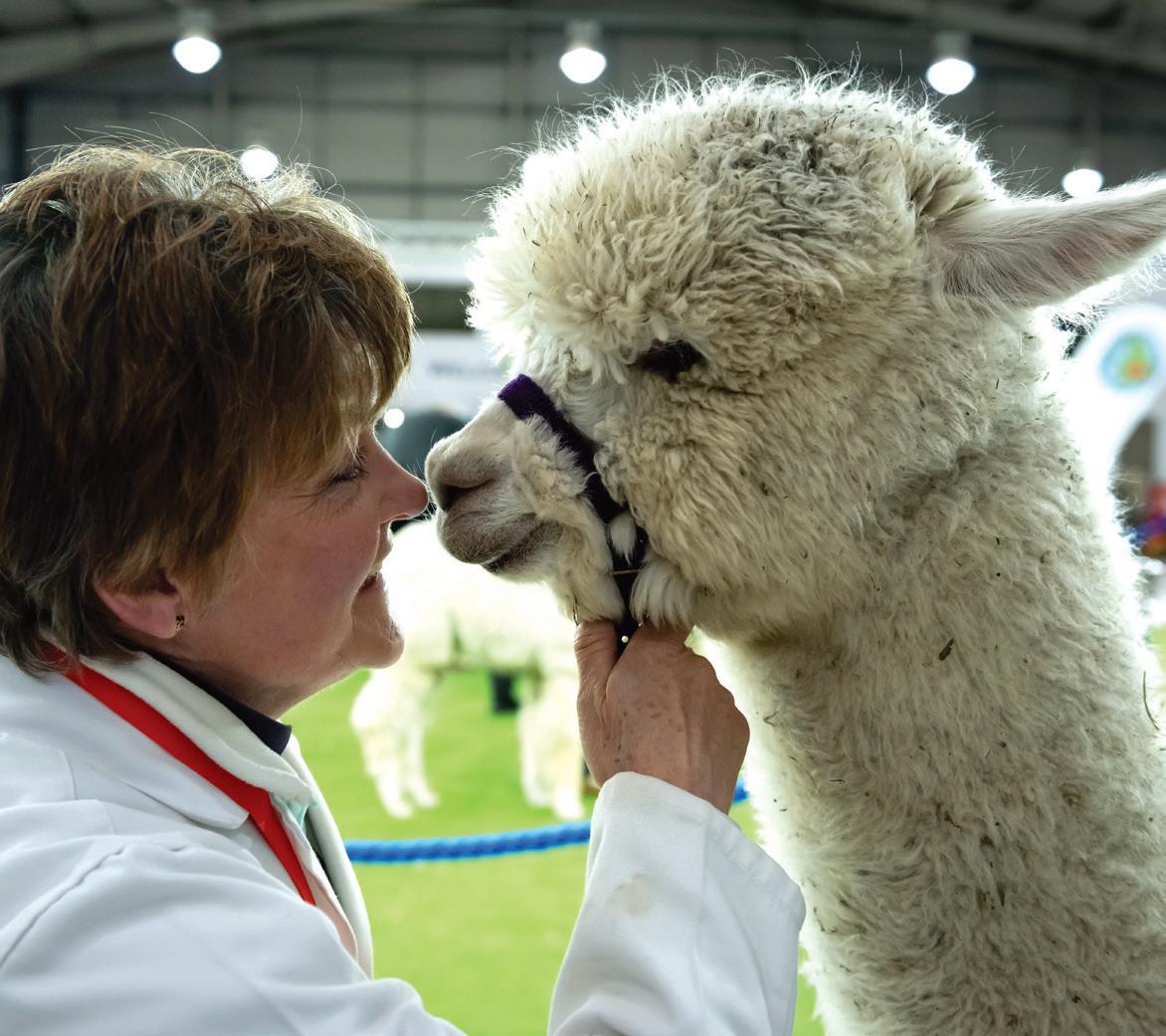
Huacaya Light Sire’s Progeny: Castlings Ashwood Monty
Huacaya Dark Sire’s Progeny: Artwork Snowmass Mystic Star
Suri Sire’s Progeny: Springfarm Thistledown Tolstoy
We’d like to say a huge thanks to all our sponsors, exhibitors and HoEAG Helpers. We could not put on such a show without your support and generosity.
We very much look forward to next year’s Fiesta, 10-12th April 2026, to be judged by Mrs Barbara Hetherington. We wish everyone success for the rest of the show season and hope to see you all back at the Fiesta next year, when hopefully there will be no bluetongue restrictions to contend with.
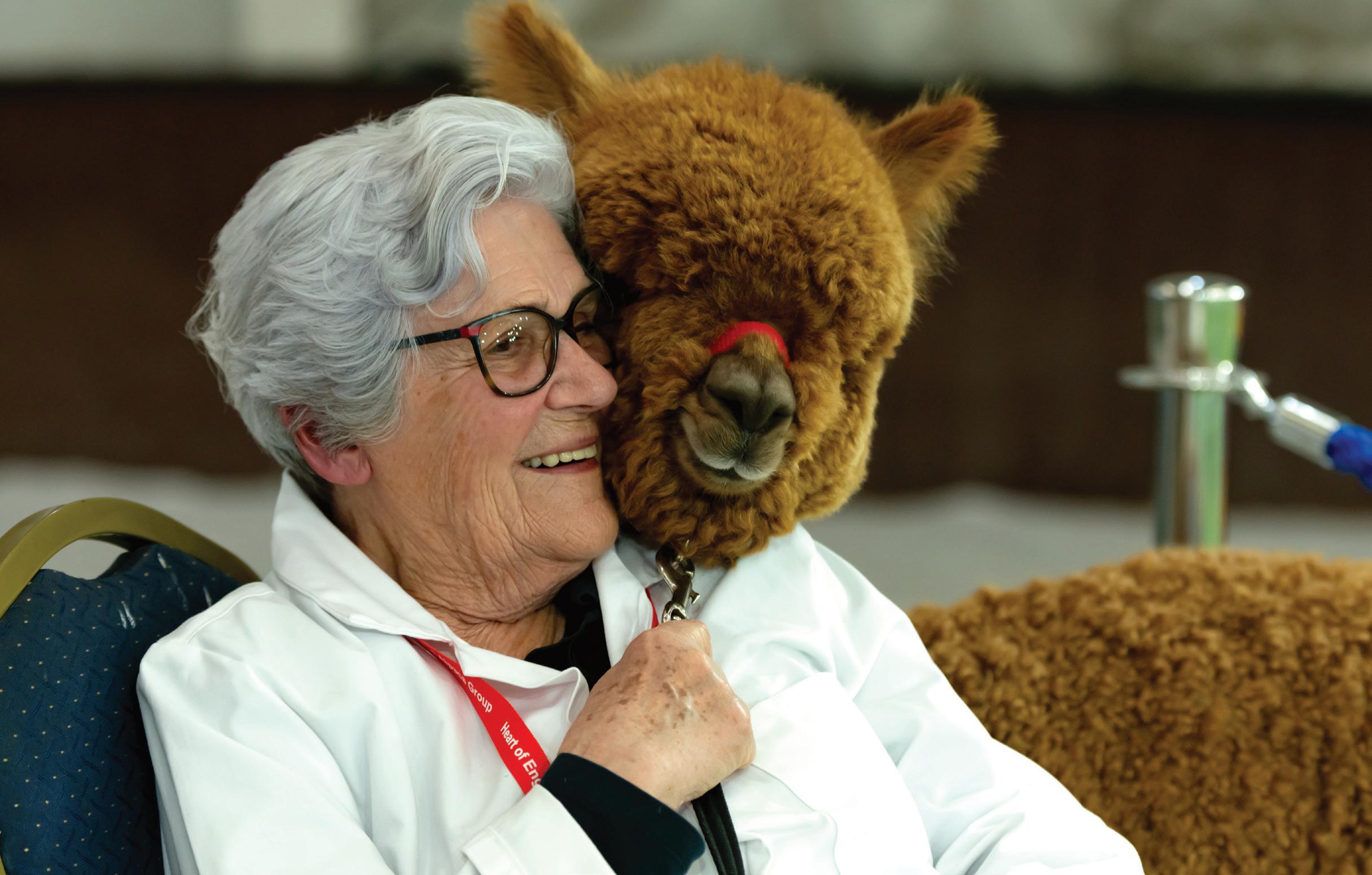
Our Outstanding World Class Genetics shine through in the sheer quality of our Champion breeding lines

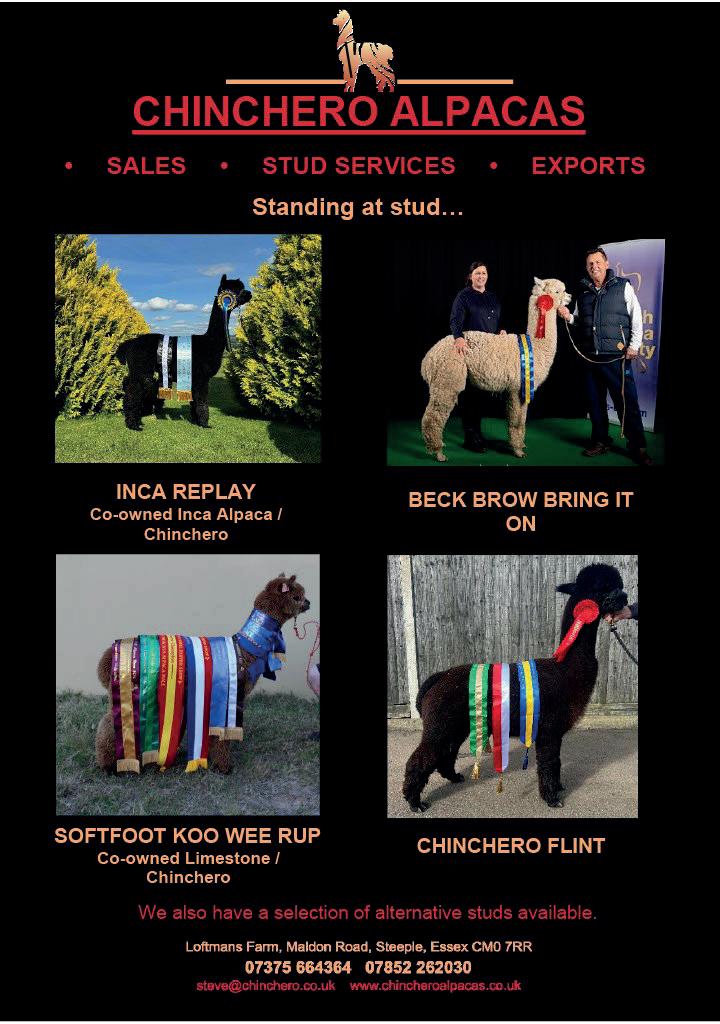
BAS National Show 2025
The depth and breadth of our breeding expertise over 36 years was reflected in the results:
BOZ Opening Night was awarded Supreme Champion Suri Alpaca Supreme Champion Suri Fleece and Best British-bred Suri
We also won 4 Champions and 6 Reserve Champions & Light Sire’s Huacaya Progeny class for BOZ Generation Now
Stud services offered during 2025 from a great selection of established and promising young Studs Studs and breeding females ~ Huacayas and Suris from champion bloodlines available for sale

contact Mary-Jo: 0771 875 0303 www.bozedown-alpacas.co.uk
Loftmans Farm, Maldon Road, STEEPLE, Essex. CM0 7RR 07375 664364 07852 262030
steve@chinchero.co.uk www.chincheroalpacas.co.uk
LOOKING TO EXPAND YOUR HERD OR START A NEW ONE?
We have a stunning selection of alpacas for sale all boasting excellent genetics. Our alpacas are raised with care, ensuring they are healthy, well-socialised and ready to thrive in their new homes.
Whether you’re interested in breeding, fibre production or simply enjoying these gentle creatures, our alpacas will be a fantastic addition to your paddock.
Member of the BAS Trusted Seller Scheme.
Ongoing after sales advice and support.

BROW BRING IT ON

Stud Services also available including…
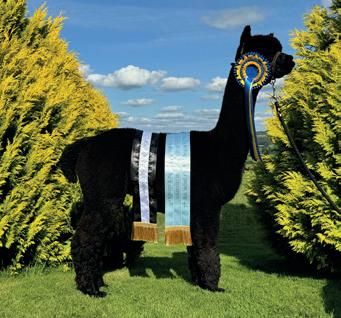
(Co-owned with Inca Alpaca)

KOO WEE RUP (Co-owned with Limestone Alpacas)

The Northumberland Alpaca Championship took place as part of the North County Show at Bywell, Stocksfield on 24 May 2025. Run by the North East and Borders Alpaca Group (NEBAG), the show was organised by Chief Stewards Rachel Vaclik and Paul Vaclik (Munaycha Alpacas).
After weeks of perfect sunshine, the day started a little on the cloudy side. However a gentle breeze blew away the threat of rain and we were able to complete all the judging outside, even ending the day in warm sunshine and blue skies. Much to the delight of judges, exhibitors and alpacas alike, and to the relief of the show organisers.
We were very pleased to welcome Mary-Jo Smith back to Northumberland to judge this year, along with apprentice judge, Caroline Barugh. Mary-Jo gave a very high standard of judging and all the exhibitors benefited from her vast experience. Her verbal reasoning was very clear, detailed and informative. Under her guidance, Caroline also gave great feedback and they both educated the exhibitors as well as engaging with the large crowds that gathered throughout the day.
The show continues to draw strong interest, with a high number of entries year after year. Unfortunately, this year saw a slight reduction in numbers on the day itself, due to Bluetongue-related restrictions and the associated guidelines implemented by the North County Show committee. However, we still had a substantial number of entries and the other exhibitors still came along for the day to support the event and their friends. We look forward to welcoming them back in full next year.
A new feature at this year’s show was the introduction of electric hook-ups and fans within the tent, an enhancement to the facilities that was warmly welcomed by exhibitors, particularly given the humid weather conditions. We will be working in close collaboration with the County Show committee to ensure these become a regular fixture at future events.
A particular highlight of the day was the inclusion of our top winners in the prestigious Grand Parade. In previous years, time constraints have prevented our judging from concluding in time to participate. However, this year, the timing was perfect allowing both the Supreme Champion Suri and the Reserve Supreme Huacaya to take their well-deserved places in the parade. They stood proudly alongside champions from other livestock categories, including cattle, sheep, horses, and even the champion rabbit, showcasing the diversity and excellence of the show.
We would like to give a huge thank you to all our valued sponsors who continue to support the show. And we would also like to thank those who helped prior to the show and on the actual show day, their efforts allowed the whole day to run smoothly and efficiently and contributed to the show’s continued success.
As always, the entries brought an extremely high standard across the board, both Huacaya and Suri and made for a really interesting and competitive show.
Supreme Champion, kindly sponsored by our section sponsor Northumberland College, was awarded to Simjest Alpacas for their adult white male, Simjest Daydream Believer. Simjest Alpacas were presented with the Vicki Ridley Memorial Trophy. Reserve Supreme Champion, sponsored by Bingfield Alpacas, was awarded to Blackberry Alpacas for their junior female fawn, Blackberry Illusive and the Supreme Suri, kindly sponsored by Blackberry Alpacas was awarded to Aylswood Rare Breeds for their junior white female Ambermoon Suri Lumière. Best Northumbrian was awarded to Barnacre Alpacas for their intermediate light female, Barnacre Aurielle.

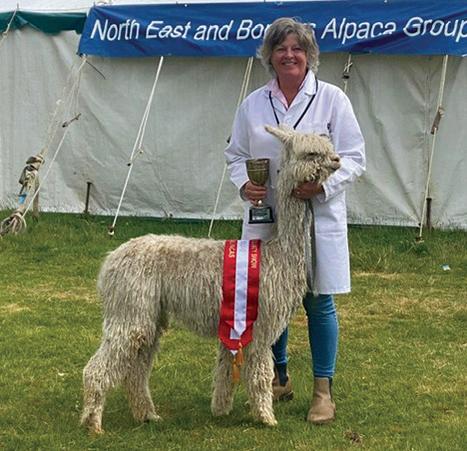

The Young Handlers class returned again this year and continued to be a delight for both participants and audience alike. Four young “alpaca breeders of the future”, of various ages, each answered questions about alpacas and penned their animal with ease. They performed exceptionally well and were proud to show off their handling skills. We are firm believers that the alpaca breeders of the future should be encouraged at an early age and the enthusiasm and skills shown on the day were praiseworthy.
Despite the cloudy start, the show itself still took a large number of visitors (just over 20,000) and as always, the alpaca section drew an immense interest from the public.
We were pleased to welcome Dylon the llama and his mate, for the day (kindly brought by Stony Pasture) who, as part of the public educational area, helped to answer the age old question of “what's the difference between an alpaca and a llama?” In addition, during the lunch break, we introduced a Huacaya, Suri and Llama into the main ring and presented a show and tell. As this was a big hit last year, we decided to feature this again and it continued to draw a huge engagement from the crowd. They were able to get up close to all
three animals and ask lots of questions. A big thank you to those who made this possible.
We always want to focus on both entertaining and educating the public as this is very important to us and this year was no exception. We had educational banners, examples of fleece, and it was great to welcome back the Tynedale Guild of Spinners who are always a highlight for the public and help demonstrate the stages of animal, fleece, yarn and product. The extra marquee space provided an ideal spot for NEBAG members to sell their alpaca products which was met with a lot of interest, generating a steady flow of customers. We also continued to provide signage and information in Braille, as well as tactile exhibits such as fleece. It was a real pleasure for Paul and I to be in the tent once more, It's such a special show to us and it's a place we always enjoy to reconnect with fellow exhibitors and make new friends. That, along with great weather and a high standard of entries made for a brilliant day on what is one of the most prestigious shows of the North East alpaca calendar. Now that the show is behind us, we are looking forward to a bit of downtime over the summer. That said, we are always thinking of ways to make the show bigger and better and planning will soon begin in the Autumn for 2025. We would love to welcome you along next year. The date of the show is 23 May 2026 and keep an eye on the BAS website and newsletter around the beginning of February 2025 when entries will open.
It is with great excitement that we are bringing to you a new and (as the name suggests) innovative fleece show. An alpaca fleece show like no other and the first of its kind in the UK offering classes for alpaca fleeces from any country, registered and unregistered alike.
The weekend presents you with a unique opportunity to have your fleeces assessed by grade before you take them forward for processing giving you the best opportunity to maximize your return.
On Saturday afternoon we have a range of workshops on offer with some great tutors lined up. Sunday will offer plenty to see and do with talks by Amanda VandenBosch, Chas Brooke of UK Alpaca and Esther Verbeek of Art of Fibre. Interested breeders can also take a tour of Alpaca Evolution and get in amongst the UK’s largest commercial herd. Amanda will also be presenting the awards to the lucky winners!
Classes will be run by breed type, fibre grade and colour. There will be award categories for BAS registered (Noodled fleece), Other international registries (Noodled fleece), and a first of its kind, open classes (open to all unregistered alpacas, castrates and non-breeding stock with entries welcome from any country (un-noodled fleeces accepted)
All fleece samples will be measured onsite by headline sponsor Art of Fibre using OFDA 2000 which offers an advanced accuracy of testing over the Fibrelux tool. Fleece length will be assessed both stretched and unstretched.
So, what do you get in return for entering? An awesome amount! Your fleece will be returned to you with histograms and a full report card with:
• Micron samples attached
• Length samples attached
• All data recorded
• Grade (class) score card
• Fleece awards
• Detailed explanation of the judging/scoring system
• Chart showing grade suitability
• Recommendation sheet for different fibre grades
Still need a reason to come. Art of Fibre will also be offering a show discount for fibre samples submitted for testing on the day, so why not bring along your samples and take advantage of this generous offer?
Events of this nature cannot happen without the support of sponsors so we take this opportunity to thank our headline sponsors:
• Art of Fibre, the most experienced alpaca fibre testing service in the northern hemisphere.
• UK Alpaca, arguably the premier buyers and processors of high quality alpaca fibre in the UK.
• Waterhouse Feeds, suppliers of top quality specialist alpaca feed. To see the full programme why not follow Alpaca Evolution on Facebook or Instagram.
LOCATION-DOT Alpaca Evolution, Fair Winter Farm, MK17 0RB �� Fleeces to be judged 19-20 September 20 Saturday September (PM) – Workshops 21 Sunday September (all day) – Seminars, talks and awards. TV www.alpacafleeceshows.com
If you’re reading this, chances are you’re either a current or future alpaca breeder, and if you’re a human, chances are you like games! So we are going to start this off with a game that involves two of your favourite things – you guessed it, alpacas and alpaca fibre. We’ll call this game “What grade am I in?” Basically, we’ll describe the use and the product, and you’ll guess what grade of fibre that particular product is made from. Make sure to write your answers down so you can check them at the end. Let’s go.
1. Imagine a snowboarder, carving the fresh powder on the ski run – I’m not only the reason behind keeping their noggin warm under a layer of unmatched, sustainably grown softness, but I’m also the reason they’re the hippest shredder on the mountain. I am an alpaca beanie. What grade am I in?
2. I’m so ridiculously soft and luxurious, you can’t resist walking on me with your bare feet. My design not only fits the decor in your home or office, but my style and durability will take your breath away. You’d never guess I was from an all-natural sustainable resource. Plus, no one ties the room together better than I. I am a Suri alpaca rug. What grade am I in?
3. Na’er a fall or winter’s eve will you stroll the city streets or nurse a cup of tea without me keeping your torso covered, cozy and warm. I am your go-to garment to keep the autumn shivers from crawling up your spine and the winter drafts from touching your tummy. I am a Suri alpaca sweater. What grade am I in?
4. All that stuff that you don’t want on your clothes when you pull them out of the dryer? Thanks to my chemical-free natural qualities,
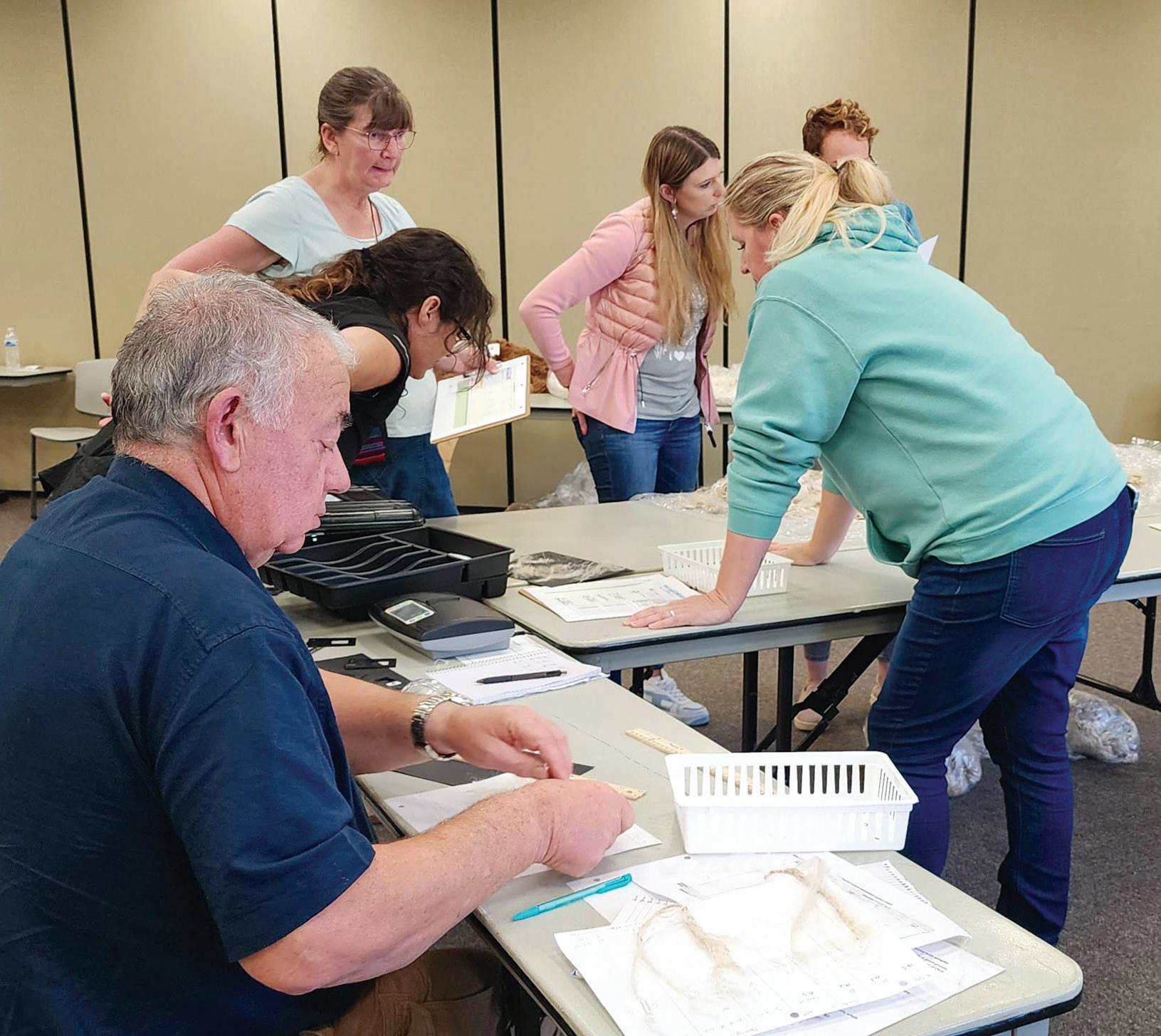
I collect it and feed off it and can’t get enough of it!
I am a felted alpaca dryer ball.
What grade am I in?
5. The flashes are firing, the red carpet is burning, the runway has cleared for us, the gasps of admiration from the crowd are firing at a pace no race car can keep up with, no one has ever seen anything like us, our fit is impeccable, the drape exquisite, from a natural fibre, they gasp, bling without the actual bling. Lustre baby!
We are a high fashion men's suit and designer dress.
What grade are we in?
With all the various uses for alpaca fibre, from undergarments and socks to high fashion fabric, carpets, insulation and felting, wouldn’t it make sense to have various ways of judging and assessing our animals based on those very uses? You wouldn’t necessarily use a Grade 0 for a rug, or a Grade 5 for a beanie? First of all, that simply wouldn’t be practical and second of all, it certainly wouldn’t be economical.
However, if there were more alpaca rugs and more alpaca beanies and more alpaca socks on the market, the trends increasingly show that they won’t be sitting on the shelves for long.
Beyond the obvious – the alpaca’s large curious eyes, their quietly grazing demeanour, the sense of calmness they bring, and their glorious draping locks emanating that mesmerising lustre and sheen, they provide us with this incredible, renewable resource that is all natural, sustainable, and even climate beneficial.
All of which are ‘buzz words’ that stretch across all industries, not the least of which being the textile industry, which has for so long depended on synthetics and polymer-based fabrics.



There is a growing demand for all things alpaca, and, in turn, there is a growing demand for alpaca fibres, no matter the grade.
Whether your goal is to produce the finest of the fine to provide for the high-end market, or if your goal is to produce fibres that sit further from the skin, perhaps fit for felting for rugs, or for products of mass consumption – socks and hats for instance – there is a place, and a demand in the marketplace, for all of it.
If the alpaca industry is looking at a future in which its magical fibres are being used at a commercial level, the time is long overdue for us to begin looking at ways of assessing the value of those fibres at a grade level, within each grade, and with an eye on end-use.
This will not only help us provide the quantities of fibre needed for larger scale production, but by recognising the genetic value of each and every alpaca, no matter the grade, it will also encourage new breeders to enter the market, whilst giving them the choice to select which grade(s) to raise based on what end-product they would like to cater to.
And that’s exactly what Innovative Fleece Assessment (IFA) was designed to do.
Not only is it an additional way to have your animals and fleece judged and assessed, but you also get incredibly valuable feedback, with measured data points, as well as suggestions on how to advance your program based on your desired outcomes. The best part is, under the IFA program, all this information is provided directly to you by the judges.
Ultimately, all alpaca fiber is valuable, and IFA aims to lay the groundwork to bring all of that value to market, whilst simultaneously increasing visibility, awareness & demand for everyone’s favorite animal (even if they don’t know it yet).
In 2021 all AOA judges were trained in the IFA system and certified.
Cheryl Gehly, AOA Senior Fleece Judge said: “One of the key benefits of the IFA competition is the technique of measuring fineness across the blanket in four specific locations. This generates valuable feedback related to uniformity of micron, a critical component of every breeding program. The focus on grade across all age groups is ideal as a means of directing the alpaca industry towards end use and longevity in decision making. The IFA model forces the breeder to consider every element of fibre production when setting goals, for the results are immediate and direct. It is very exciting to be part of this forward momentum!”
Karl Heinrich, New Era Fiber & Suri Alpacas said: “In 2020 we submitted

some fleeces to the AOA National Innovative Fleece Show, just to see what information would come out of it. The show report was interesting. I found myself using the chart that showed four samples of the animal’s fleece with length and average fibre diameter of each sample a great tool for explaining this to prospective customers. So in 2021 we submitted fleeces again, but I also volunteered to work the show. I was partnered with Wini Labrecque to measure and record the diameter and length of the fleece samples. My interest was as much scepticism as anything. The idea of competing by fleece grade (and therefore by usage of the fleece) made sense to us. Uniformity of staple length is very important in the manufacture of yarn. Uniformity of micron is important, but the range of micron is a little more forgiving than that of length. Using a “four-point grid” sample vs a “single core” sample is eye-opening. It literally is a tangible visual aid.
“In processing, deviation of fibre length is not something that can be mechanically removed whereas fat fibres can be separated out as part of the process. During spinning the spinner is setup based on the long fibres and the shorter ones are the problem. If you are making lumpy bumpy worsted weight yarn it would not matter. But when you can count the number of fibres actually in the yarn no bumps or lumps are tolerated. Hairy fibres that would not twist the same as the skinnies are a disaster.
“Why is it so important? The products we have chosen to manufacture are intentionally light weight. So they can be worn in a broader temperature band. The yarn we use is much finer than traditional lace weight. The single is 9g per 100 yards. We developed this yarn because we wanted drapey, flowing, garments with intricate stitch patterns. We were also using a similar weight yarn in a 3 ply to make dress socks.
If a breeder is interested in having their fibre used for end products, then they need to know what the end product requires of the fibre. We have made woven rugs from random 35-40 micron leg fibre. And we have made blankets and outerwear from grade three to four older animal blankets. But to make a lacy garment it takes uniformity of length and less than a 25-26 uniform micron count.
“The value of this system today is in the report produced, it is an eye-opening teaching tool. A training aid for the breeder and new breeder alike. I suspect it will be a standard report in the future. Maybe it should be included on the registration website.
“All of this information is true for Suri’s or Huacaya’s alike. In fact our stock sweaters are being made from a blend of Huacaya and Suri. They both bring their own properties to the table. All blending fibres fall into these same restrictions.”
Leslie Oliver, AOA Show Superintendent, Limestone Creek Alpacas, LLC said: “Over the years, I have participated in many traditional fleece shows. Most of the fleeces that I have entered in those shows were from younger animals with fine fleeces. When I first heard about the new Innovative Fleece Assessment format, I was intrigued. To try it out, I entered one fleece from an older female in the 2020 AOA National Show. This fleece was higher in micron, and by no means what I’d describe as a “sexy fleece”. But this female was maintaining a bright, uniform fleece as she aged.
“When I got the results back from the show, I was blown away by the amount of useful information that I received on this fleece. The Innovative Fleece Assessment provided me with a detailed, in depth look at the fleece that this animal had produced over the previous year. As part of the assessment, I received data on micron and length from three samples, as well as the actual samples that were used to generate these results. This allowed me to compare the samples to the data. What a great learning tool! The packet that I received also included suggested uses for various grades of fleece, including my fleece. The focus was on finding the best use for a particular grade of fleece, and that every fleece, regardless of grade, had purpose and value.
‘The Innovative Fleece Assessment is another powerful tool that breeders can use to track and assess their herd. In addition, as more affiliates embrace fibre projects as part of their membership benefits, the push to recognise and promote uses for all grades of fibre will make the Innovative Fleece Assessment more relevant.”
Jude Anderson, Senior AOA Alpaca Judge said: “Having your fleeces assessed through the AOA endorsed Innovative Fleece Assessment program is an unparalleled opportunity in the US alpaca industry. The evaluation and subsequent information received by each entrant are relevant, both to our fibre industry and to the breeder. Assessments like the IFA will take the US alpaca fibre industry to the next level. I commend all breeders to add this to their toolbox!”
Beth Sheets, Chair AOA JTCC, Heritage Farms Suri Alpacas said: “Innovative Fleece Assessment is a new tool that allows us to learn more about our alpaca fibre characteristics. One of the important fibre characteristics for our farm is improving the consistency of the fibre over the entire animal. Using the information that we gained from IFA helps us understand how consistent the animal fibre is within a sample and across several samples. In addition, the comments provided on how the fibre can be used in end-products helps breeders understand what they are
AOA Senior Judge and Judge Trainer for all certifications: Huacaya Halter, Suri Halter, Fleece, Performance
Amanda has been raising alpacas, both Huacaya and Suris for 32+ years along with her family at Flying Dutchman Alpacas, LLC in Bend, Oregon, USA. Amanda travels worldwide as an international alpaca judge, judging and teaching on all aspects of alpacas, fibre, and end products. She has been active with many organisations and is co-author of “Art & Science of Alpaca Judging” and “Innovative Fleece Assessment Judging System” along with many research projects related to the selection, health, and well-being of the alpaca. Amanda is passionately involved with the non-profit organisation Quechua Benefit in Peru.
Amanda is an alpaca enthusiast in all aspects from selective breeding decisions and raising of high-quality alpacas to a passionate educator known for her interactive clinics and sharing of knowledge with fellow alpaca enthusiasts worldwide.
1. Alpaca beanie: (Grade 2 Fibre)
2. Suri alpaca rug: (Grade 4 or 5)
3. Suri alpaca sweater: (Grade 3)
4. Alpaca dryer ball: (Grade 5 or 6)
5. Fashion dress and suit: (Grade 0 or 1)
producing and how it can create beautiful products to showcase their herd.”
Laurel Shouvlin, AOA Alpaca Judge, SN BOD, Bluebird Hills Suri Farm said: “The IFA competition is another informative tool owners and breeders can employ to better understand their alpaca's attributes and then utilise that knowledge in breeding decisions and how best to transform their alpaca's fleece to product.”
We hope this gives you a good understanding of the new Innovative Fleece Assessment (IFA) system and tool. Our aim is to provide you with a comfortable jumping-off point to learn more about how embracing the IFA system can help take your programs to the next level.
With your help, we can get there.
Article by Amanda VandenBosch, Creator & Founder IFA, AOA, International alpaca judge and alpaca breeder, Flying Dutchman Alpacas, LLC Bend, OR, USA and Wasim Muklashy, Creative Director and Multimedia Producer, byWasim.com
more TV www.IFAAlpaca.com
Wasim is a nature, travel, humanitarian and conservation photographer, and co-founder of Superswell VR, a virtual reality company specialising in immersive experiences for the outdoor and travel industries. He also happens to be the world’s première alpaca photographer – PacaPics.com. Wasim serves on the board of Ecology in Classrooms & Outdoors (ECO), a non-profit that brings ecology education to kids in underserved communities and spends whatever time he has left documenting our outdoor spaces and the endless wonders of Mother Earth.
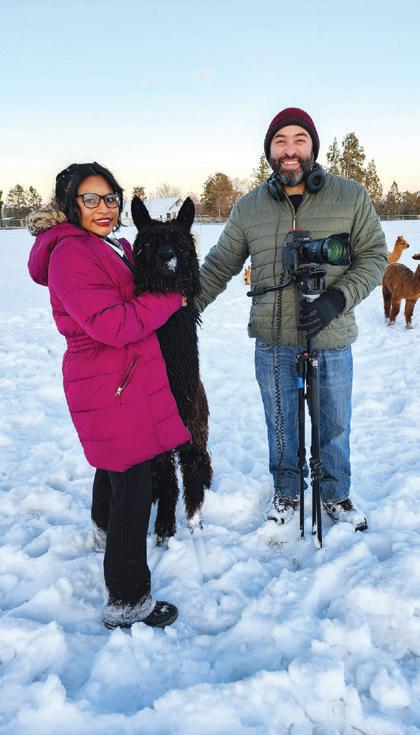





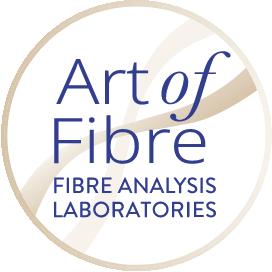
So shearing is done, you sit down, sigh with relief and then wonder what on earth to do with all those bags of fleece!
We know alpacas have beautiful fibre which can make beautiful things, but the leap from a bag – or several bags of fluff to a finished product can seem very daunting.
Depending on how involved you want to be with the process, there are three main options to choose from: you can have the whole lot picked up by a company that collects all grades of fibre from all around the country, and then process for their own use. This is definitely the easiest option, it won’t get you that lovely jumper from your favourite alpaca, and it probably won’t cover the cost of your shearing – depending on the ages and quality of your fibre. But it’s useful service, especially as an option for leg and neck fibre and blankets from your older alpacas.
The next step up is to send your fleeces to a specialist alpaca mill
to be processed into yarn. Although it may seem expensive at first, processing fleece to yarn is a skilled, multi-stage operation and the result is a consistently spun, saleable yarn, ideal for knitting, weaving, or crochet projects.
Most mills need a minimum weight of fibre to work with per batch, so if you only have a few alpacas, it’s worth storing the fleece for two to three years so you can send off a good amount in one go. However, if you decide to store fleece it is crucial to make sure the fleeces are carefully bagged; they need to be able to breathe without letting in any of those nasty fibre munching moths.
When processing fibre at the mill, some loss is inevitable. You can typically expect to lose about 20–35% of the original weight, some of which will be from the dust and debris that fleeces love to collect over a year of growth.
>> Continued on next page

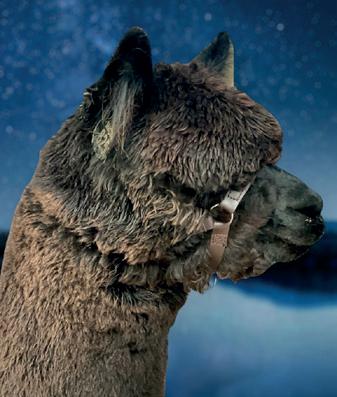
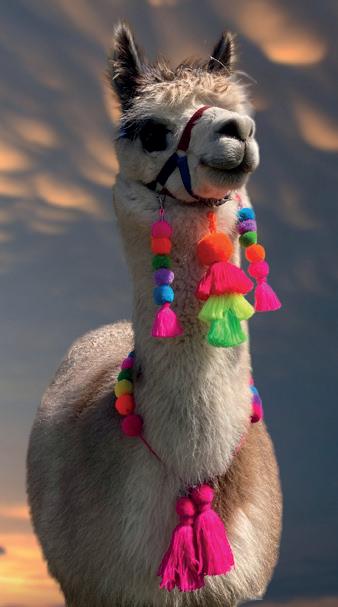
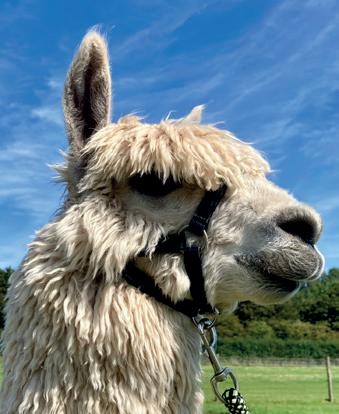

















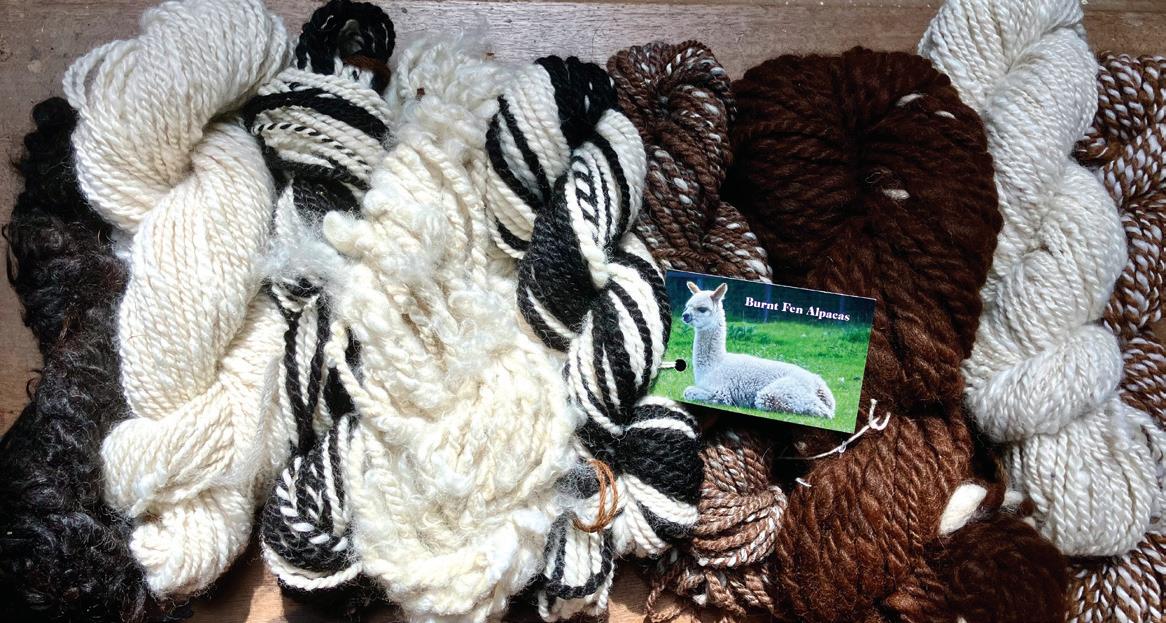

Annie Nickerson runs regular hand spinning, weaving and natural dye workshops at her alpaca farm in Norfolk.
For more details contact Annie at or via her website:
✉ burntfenalpacas@gmail.com
TV www.burntfen.co.uk
These are the companies that I use, there are others that are available.
Fleece collection: Michael Cooke at DB Wools
✉ michaelcooke@dbwools.co.uk
Alpaca mill: The Border Mill
TV www.thebordermill.co.uk
Hand spinning a good fleece – more on that shortly – results in virtually no waste as you’re in control of the entire process. Aside from the initial investment in a spinning wheel, the process carries no monetary cost. However, it does come with a different kind of expense: your time. Hand spinning is, by its nature, a slow and time-consuming craft, and when I say slow, I mean slow, slow. You need to let go of any concept of knocking up three kilos of yarn over the summer – well unless you do absolutely nothing else!
But once mastered, you have complete control over the type of yarn you want to make, giving a huge choice of colours, thickness and style. You can make unique yarn from your own fibre that no one else will ever have and the process becomes an enjoyable pastime rather than just a means to an end.
Hand spinning is also mindful as it requires focus on the task at hand, taking your mind away from the busy everyday chatter. Working with your hands is well known for its therapeutic benefits, and learning a new skill is a great way to keep those neurons firing! Taking your fleeces from basically fluffy bits of fibre to a finished product; be it yarn, or a knitted or woven piece is very rewarding.
Personally, I use all three of these options. We have around 40 alpacas at Burnt Fen and there is no way on earth I can hand spin them all. So, it’s time to get realistic about what you want from your fleece. If you just love having your alpacas meandering in your pasture and don’t want to deal with the fleeces, fine, have them shorn and hit the dial button to get your fleeces collected. Bye bye fleeces, hello empty shed. Do hold on to some to keep tender plants safe over the winter and for the compost heap –slugs also hate it, which is very handy.
Or, you may really want to get some yarn made from your own alpacas, but crafting is just not your idea of fun. In this case, book your fibre into the mill. Mills get very booked up and it’s not uncommon to face a wait of over a year before your fleece can be processed. The upside is that this gives you time to research the type of yarn you want and to decide whether to keep colours separate or blend them together. The mills are very helpful advising you with this. If you only have a few alpacas, blending fleeces can be a practical option – but be sure to match fleece quality. Avoid mixing a fine fleece with an older, coarser one, as this will reduce the overall quality and waste the potential of your best fibre.
If you want to get really involved with your fleeces and learn a new skill, hand spinning is a creative and rewarding process that gives you complete control over what you produce.
Crucially, with both the milling process and hand spinning, you get out what you put in. Spinning coarse fibre will give you coarse yarn, be it mill spun or hand spun. Sending a fleece to the mill full of moss and grasses, will give you yarn speckled with moss and grasses. The blanket or firsts of the fleece is the fibre you want to work with and assessing and prepping your fleece is essential to make sure your yarn is fit for the required outcome.
A 10 year old fleece is not going to make you a soft baby blanket, and equally a fine fleece will be wasted on a throw for the back of your sofa. Be ruthless, discard any guard hair or the coarser fibres that can be found at the edges of the blanket area. The fibre needs to be fit for purpose, or you will be wasting both your time and your money. Alpaca is a fantastic fibre to work with so make sure you get the best out of your fleeces!
Each of these options has its place in tackling that dark secret of how many bags of fleece you have stashed in your shed - along with all those promises of presents of alpaca socks and jumpers for Christmas and birthdays – but you didn’t say which Christmas and birthday so it’s all good.

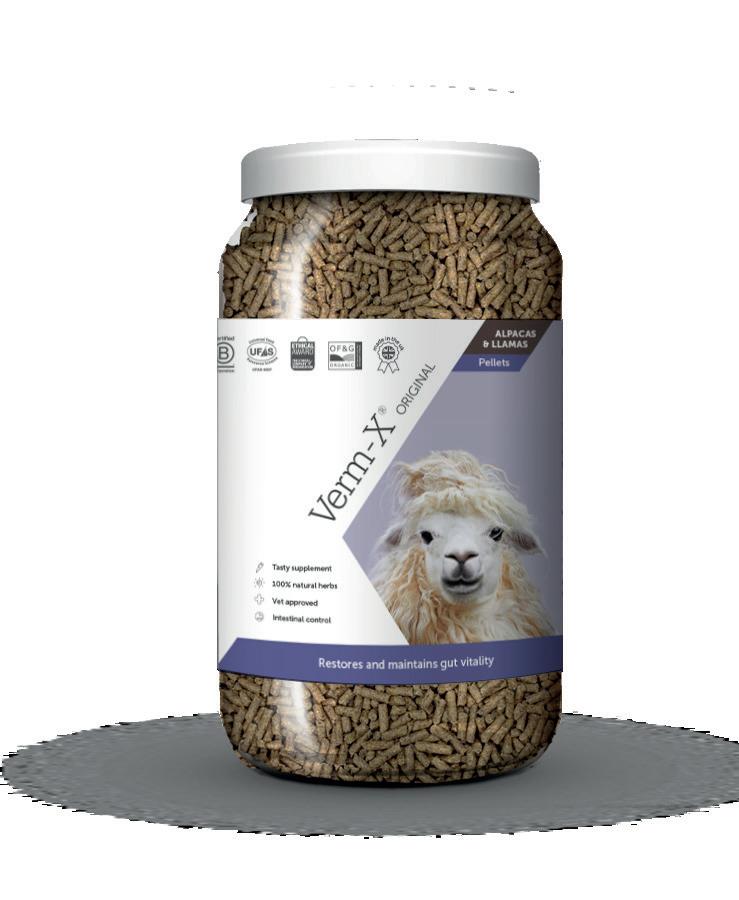
In April, world renowned Peruvian alpaca judge Jose Berdejo made a visit to the UK for the very first time.
Many who have visited Peru for alpaca related tours will recognise Jose Berdejo’s wonderful smile, but that same generosity and warmth Jose gives off, is the same reason that he ended up visiting the UK. After offering to give a talk on visiting Peru, specifically the Alpaca Fiesta and similar competitions, for a BAS regional group, one conversation led to another, and he timed a quick visit over whilst judging in France.
Jose only managed to visit a fraction of the farms he would have liked

to. But still had a wonderful time, also tying in a visit to the North West Alpaca Group’s regional show.
Jose’s enthusiasm and love for alpacas and their people is incredible. He left everyone he spoke to feeling inspired and passionate about our fabulous industry, which we often forget is worldwide!
Jose was astounded by the quality of UK alpacas, their longevity (meeting some of his oldest alpacas, ever, and still breeding) and the exceptional welfare of UK alpacas.
Thank you for coming, Jose.

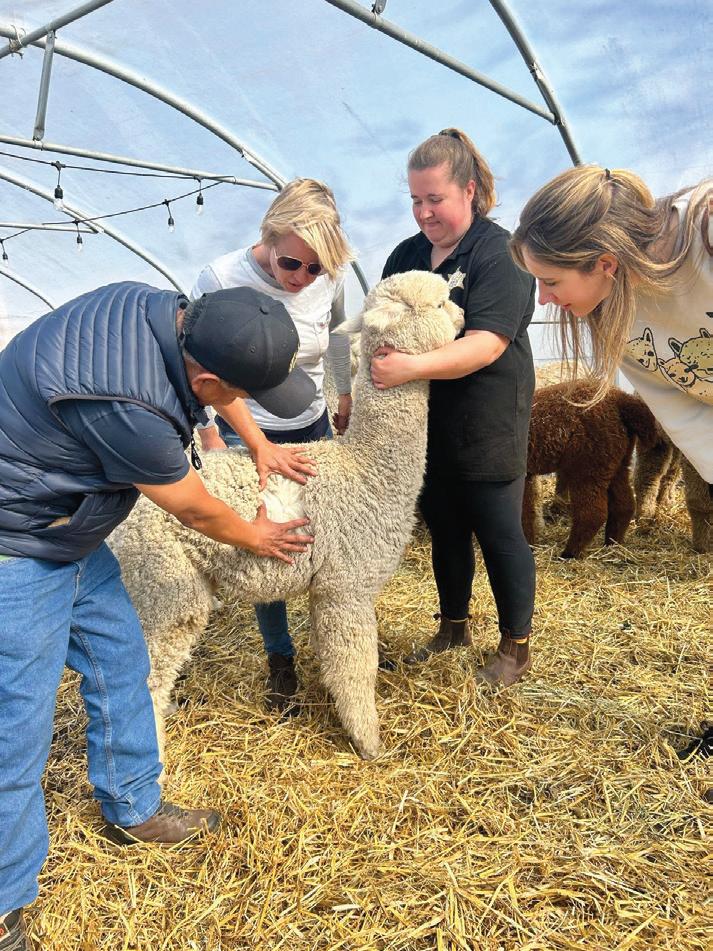
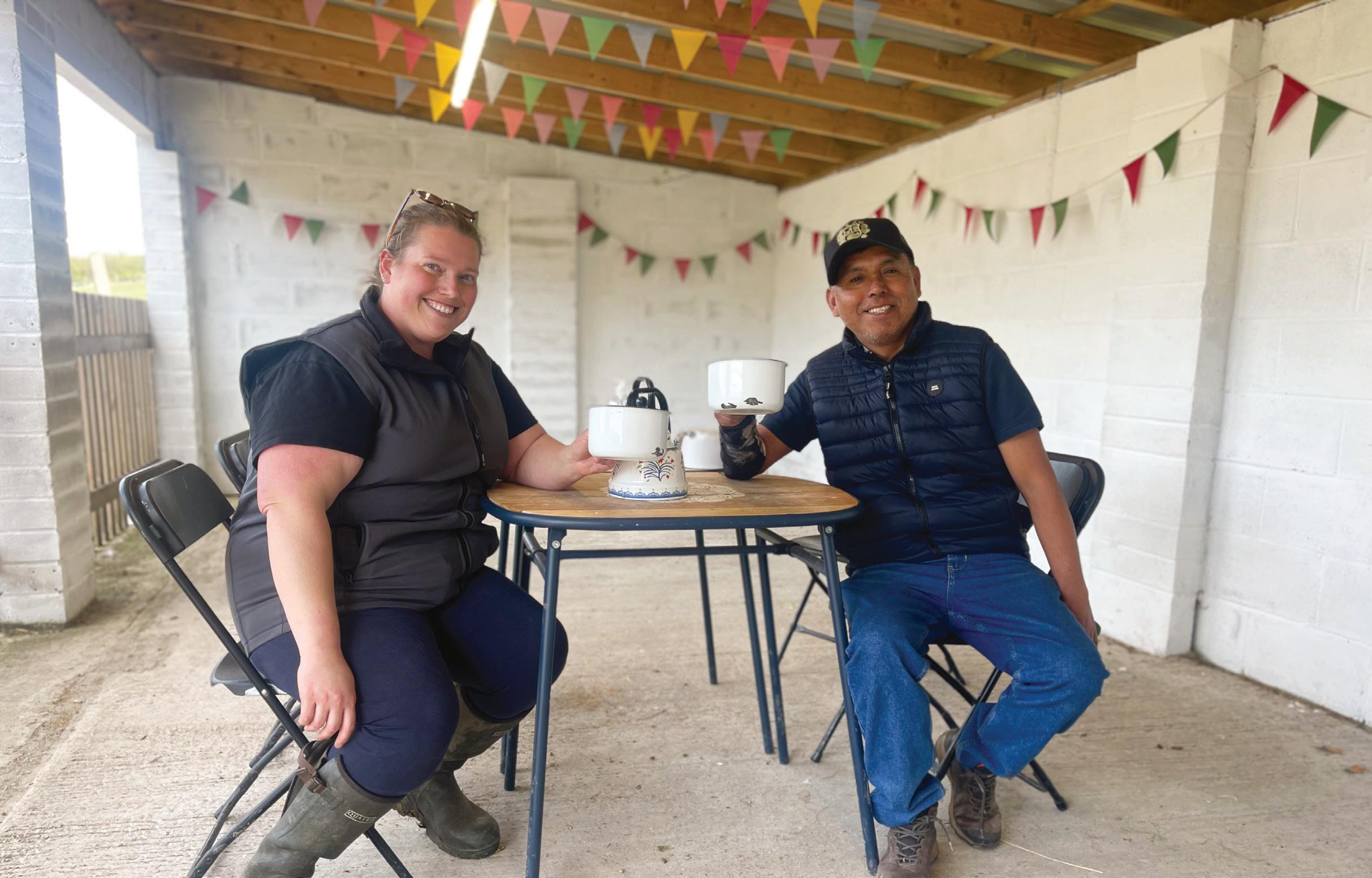

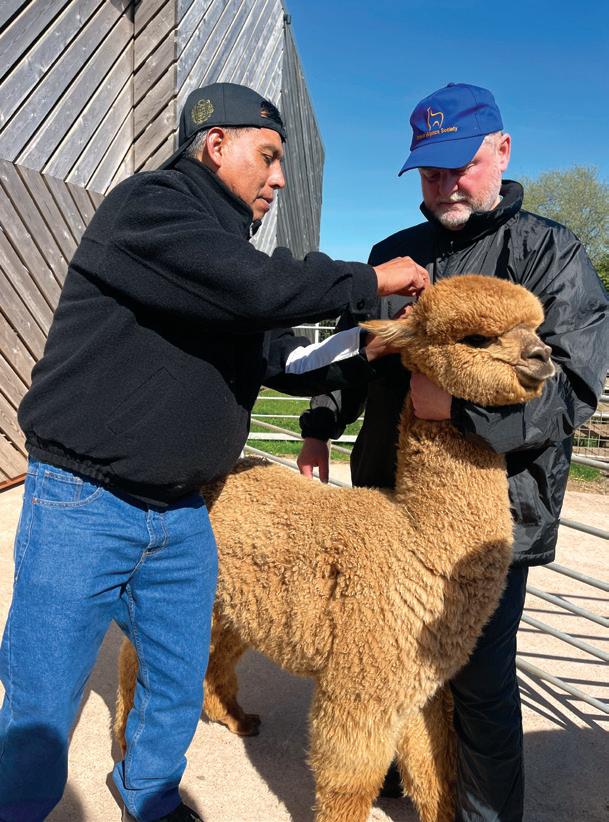


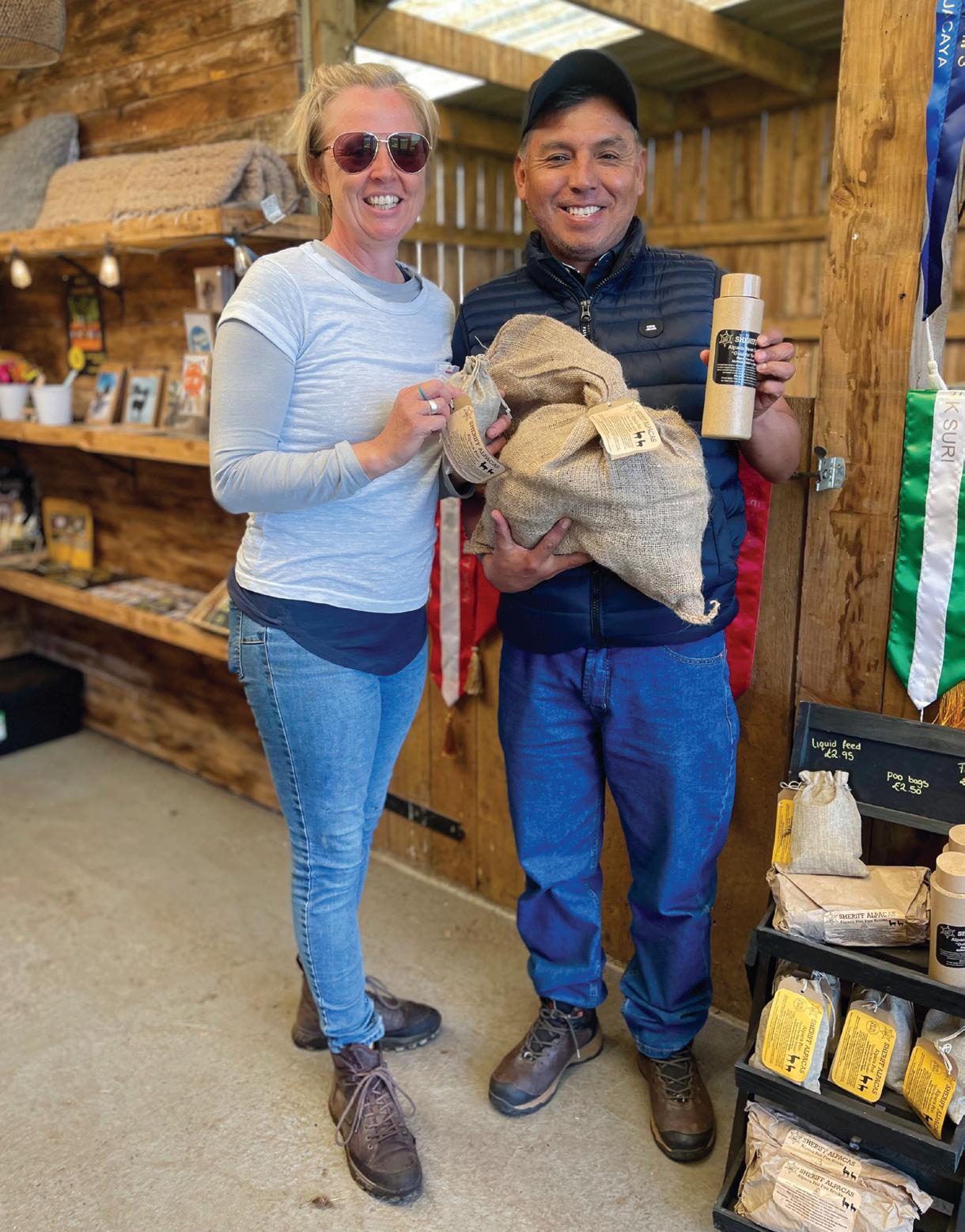


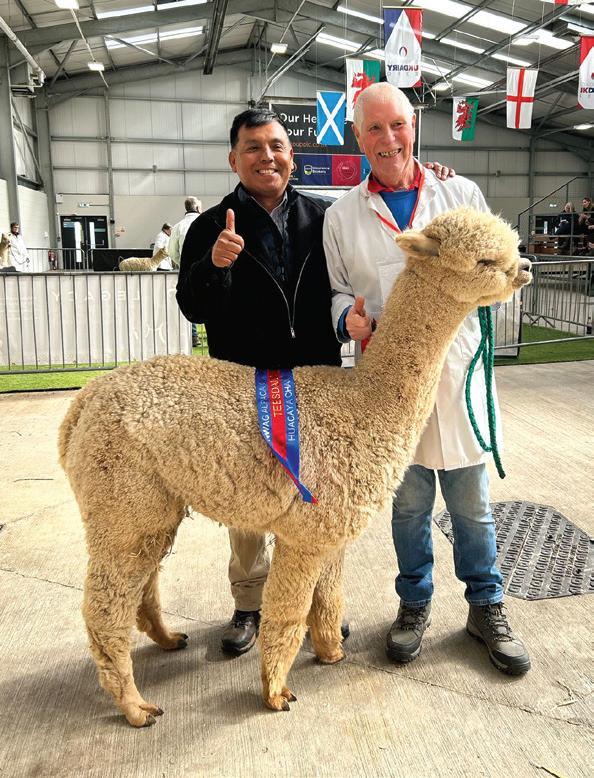
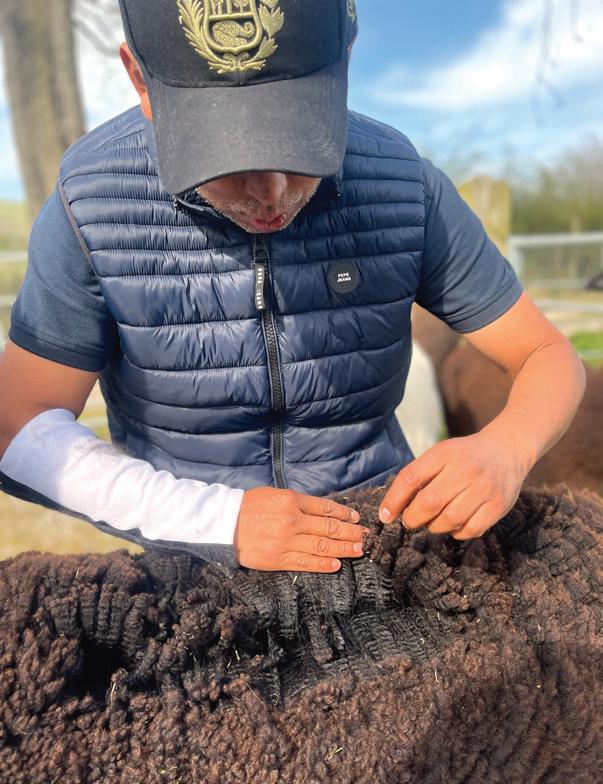


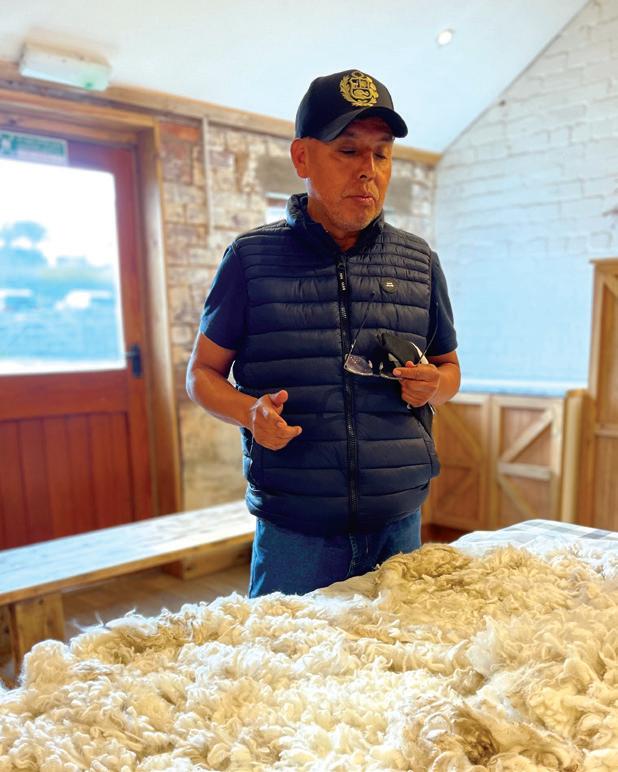
A list of BAS members who are breeders and advertising their alpacas for sale
Home of The Tartan Alpaca®,
The Dark Sky Genie™ and Destination Mating.

Located in rugged and beautiful North Cornwall, we focus on Suri and have a herd of elite alpacas with some of the best and varied genetics in the country. We sell quality breeding stock, in particular Suri starter herds, and offer full stud services as part of Poldark Suri Stud.
WENDY: 07712 136949 TOM: 07825 105530
EMAIL: tomandwendy@darkskyalpacas.com
WEB: www.darkskyalpacas.com
The family run JandJ Alpaca herd was established in 2005 with four breeding females, today we have over 90 beautiful animals. We are located in Lincolnshire on the Nottinghamshire, Lincolnshire, Leiceistershire border just off the A1.

Celebrating 28 years of continuous selective breeding for colour, consistency, fineness and density. Champion Stud services available.

Re-organisation Sale in progress: Show stock, Breeding Stock, Studs, Walkers, Fibre, Guard and Therapy alpacas for sale in all colours at prices to suit all budgets.
Husbandry, Fibre, Processing and Management workshops available hosted by Rob & Shirley Bettinson – two former BAS judges with over 30 years’ experience in all aspects of alpaca breeding and showing.
We are dedicated to helping you realise your own alpaca aspiration.
SHIRLEY: 07970 626245 ROB: 07973 123008
EMAIL: shirley@toftalpacastud.com
WEB: www.toftalpacastud.com
With years of experience our aim is to help you choose the best alpacas to start you journey, whether it be breeding females, stud males or pet boys.
Stud services also available from top coloured genetics.
MARTIN OR CLARE: 01636 626990
EMAIL: sales@jandjalpacas.co.uk
WEB: www.visitalpacas.co.uk

Faerie-Tale Alpacas is a friendly family farm based in Kenilworth in Warwickshire. We focus on breeding sound, healthy, friendly, high quality alpacas with advanced fleeces and proven genetics. With over 10 years experience we offer a range of alpacas to suit every budget and specialise in new breeders.
We know all our alpacas and have most colours available. Discounts on multiple purchases and full support for new owners. Call to arrange a visit. We are located in central England, easily accessible by road and only 20 mins from Birmingham airport.
We offer: • Quality breeding stock • Starter herds
• Hand knitted alpaca garments and accessories from our herd
TEL: 07950 671672 FACEBOOK: Faerie Tale Alpacas
EMAIL: info@faerietalealpacas.co.uk
WEB: www.faerietalealpacas.co.uk

Located on the Solway Firth, in Cumbria, King Garth Alpacas is a family-owned herd where we aim to breed beautiful, happy, healthy and friendly alpacas with top show winning genetics.
We have alpacas to suit everyone and all budgets; from pet boys to starter herds, elite females and stud males. We offer full support and advice before and after sales. Please feel welcome to get in touch and chat about your alpaca needs.
We also offer stud services, alpaca experiences, luxury alpaca products.
TEL: 07762 286050
WEB: www.kinggarthalpacas.co.uk
The PennyBridge Herd and Stud. One of the first alpaca farms set up in the South of England, still producing show winners from champion stock. Good quality starter herds, proven and potential stud males, fancy grazers and sheep guards available.
‘Home of The Alpaca Experience’.
Situated in North Hampshire, close to the Surrey and Berkshire borders with good access to ports and airports, less than five minutes drive from both J5 and 6 of the M3. TEL: 01256 764824 or 07801 132757
EMAIL: joy@pennybridgealpacas.co.uk
WEB: www.pennybridgealpacas.co.uk
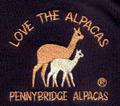
Ballymac Alpaca is situated in Gilford, Northern Ireland. Our multiple prize-winning herd consists of carefully chosen genetics from around the world. We breed Huacaya alpacas of all colours, including appaloosa. Available for export.
Our online shop sells camelid supplies including GWF alpaca feed, birthing and husbandry items shipping throughout the UK or for collection.
Our Champion Studs are available for on-farm or mobile stud covers, including Champion of Champions Bozedown Trailblazer.
Look on our website for more information.
TEL: 07546 929659
EMAIL: mail@ballymacalpaca.com
WEB: www.ballymacalpaca.com








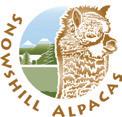
Established in 2002 and situated on the North Cotswold hills close to the picturesque village of Snowshill, the current herd numbers over 300. We breed both Huacaya and Suri alpacas (approximately 75% are Huacaya). Although our breeding programme is biased towards the darker colours, we do also have superb quality whites and beige alpacas.
Full range of alpacas for sale, attractive pets to top show quality breeding girls and stud boys. Large choice of stunning stud males available to service your girls. Also offering natural alpaca fabrics made in the UK from the fleece of our own herd. TEL: 01386 853841 or 07711 044106
EMAIL: snowshillalpacas@btinternet.com
WEB: www.snowshillalpacas.com
At Fancy That Alpacas, we love colour and patterns! We also breed friendly, healthy and easy-tohandle alpacas. Our herd carries top-quality genetics, with excellent conformation and fleece traits.

Part of the Trusted Seller Scheme, and also Affiliate Trainers for the BAS, we feel that selling alpaca is a real responsibility. It is so important to us that new owners have all the information, training and support they need to look after their herd the very best they can.
TEL: 07711 340658
EMAIL: tanya@tanyarussell.com
WEB: www.fancythatalpacas.com



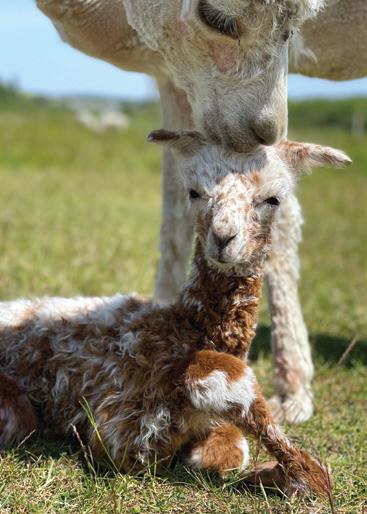

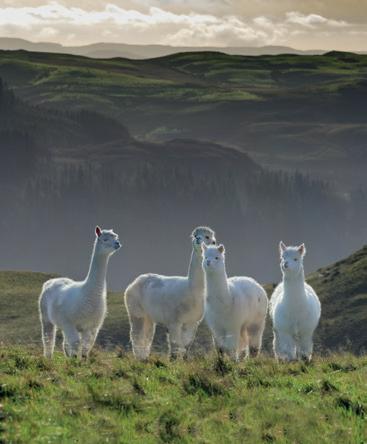



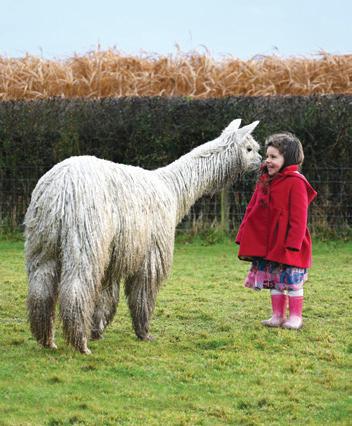



M.R.Harness was founded in 1995 after existing part time for a number of years. Mary herself is a qualified engineer and is well placed to assess materials and their useage. Company policy is to test as many of the webbing designs as possible before release, as each item is unique to the animal it is designed for. This has led M.R.Harness to become the supplier of choice for headcollars, leads, coats and harness for all the various smallholding animals, but specialising in alpacas and llamas, and working ponies.
All items are hand crafted ‘in house’, in England, so you can be assured of good workmanship and quality products that last.
So please come and try the ‘Choice of Champions’.
TEL: 01299 896827
EMAIL: mary@mrharness.co.uk
Everything you need for your alpacas delivered to your door! We are a one-stop-shop for alpaca supplies, including headcollars and leads, vitamins and nutritional supplements, healthcare and welfare supplies, colostrum, coats for cria and adults and microchipping equipment.
We also have a good selection for your other animals, including dogs, chickens and horses, as well as a range of farmhouse items and gifts, including our famous home cheese-making kits.
We are alpaca owners ourselves and we are always happy to help with your questions and enquiries.
Order direct from our website or by phone. You can expect fast, friendly service and advice.
TEL: 01295 713188
EMAIL: homesteadfarms@btinternet.com
WEB: www.homesteadfarmsupplies.co.uk
High specification organic chealated nutritional supplements suitable for all camelids.
• Premier Camelid Drench
• Premier Mineral Supplement
• Premier Mineral Bucket
• A, D3 & E Paste
TEL: 07866 607466
EMAIL: jganimalhealth@aol.com
WEB: www.jganimalhealth.co.uk








Alpacas are amazing animals and can live 15 to 20 years with the right care. Taking care of their happiness and health is a long-term commitment, but so worth it! That said, unexpected vet bills for illnesses, injuries, or accidents can add up fast. That’s why having a good plan in place to protect your alpacas is so important. Here’s how to pick the best policy for your alpaca:
Comparing insurance policies can feel a bit tricky. But here’s a helpful tip: look for plans that cover illnesses, injuries, and accidents – those are the costs that can really add up. Imagine your alpaca needs surgery on its leg after getting caught on a fence. The right policy can take the financial stress off your shoulders and help them get back on their toes in no time.
Insurance policies can have exclusions, so it’s always a good idea to read the fine print. Some might not cover pre-existing conditions or certain health issues, while others might not cover you if your claim is breeding-related. Taking the time to check these details can save you from any unpleasant surprises when it’s time to make a claim.
It’s easy to be tempted by the cheapest premium, but it’s worth taking a closer look at what you’re actually getting. Cheaper options can sometimes mean higher excess payments (that’s the amount you pay towards any claim) or less coverage. Think about what your alpaca really needs and pick a policy that offers solid protection at a fair price.
Every policy has claim limits – this is the maximum amount your insurer will cover for vet care within a set period, usually a year. Look for plans with reasonable annual caps and cover for a high percentage of vet bills. That way, even if your alpaca needs ongoing or expensive medical treatment, you won’t be stuck covering all the costs yourself.
Choosing an insurer who really understands alpacas can make a world of difference. That’s where ExoticDirect comes in – they specialise in exotic pet insurance and truly “get” alpacas. (In fact, they’re the only provider that insures alpacas as pets, not as farm animals!) With them, you’ll get a policy that actually fits your furry family member... something you might not always find with other pet insurers.
The right policy can help protect your pet alpaca at every stage of their life. By understanding what’s covered, what’s not, and choosing a specialist provider, you can make the best choices for your alpaca.



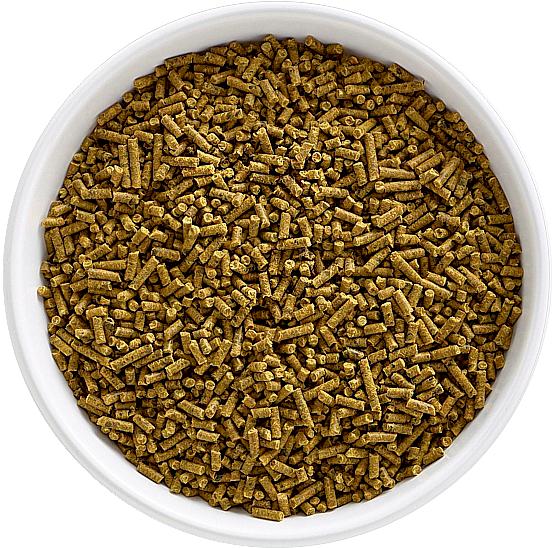

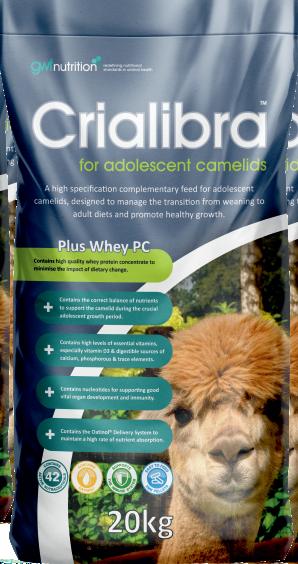


We are proud to offer:
Business plan for new breeding herds and full herd assessment and business review for established breeders.
Elite pedigree breeding and pet stock for sale in the UK and for export to the EU, Qatar, UAE, Saudi Arabia and India.
Help obtaining planning permission for a dwelling using alpaca breeding as justification – we did it and have helped others.

